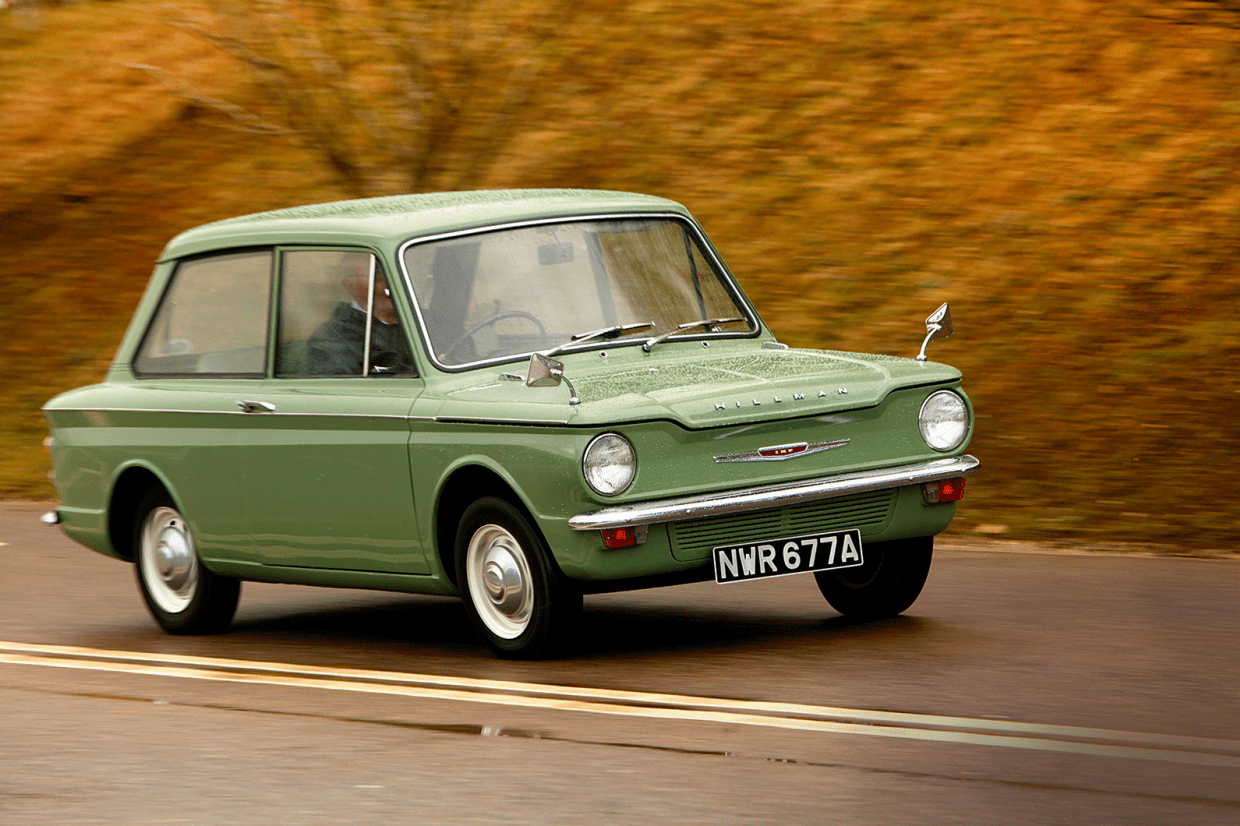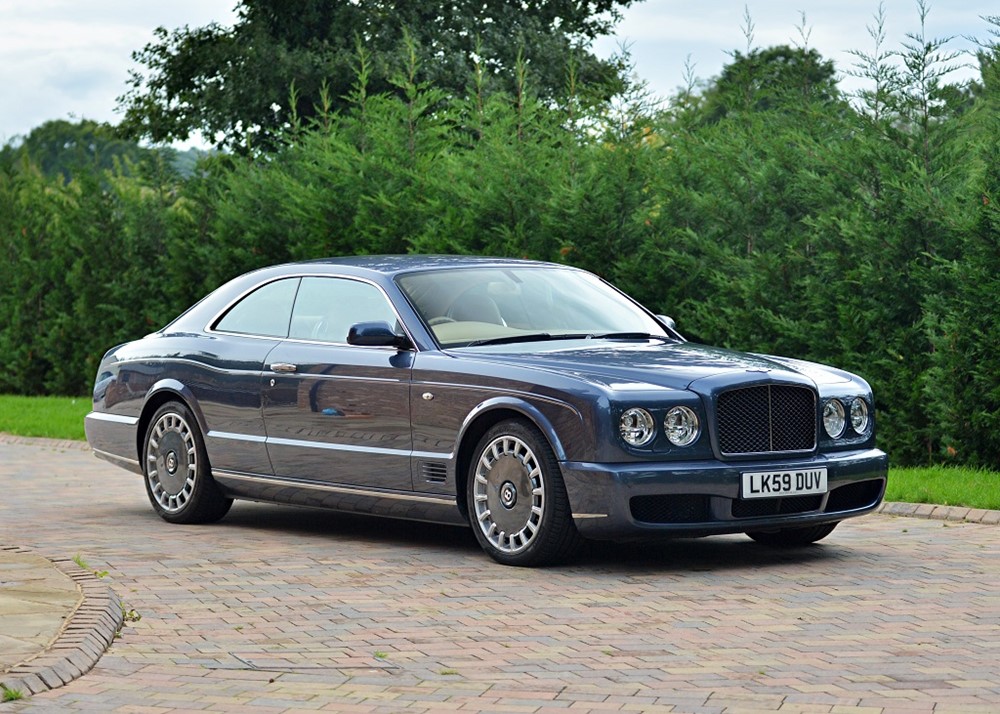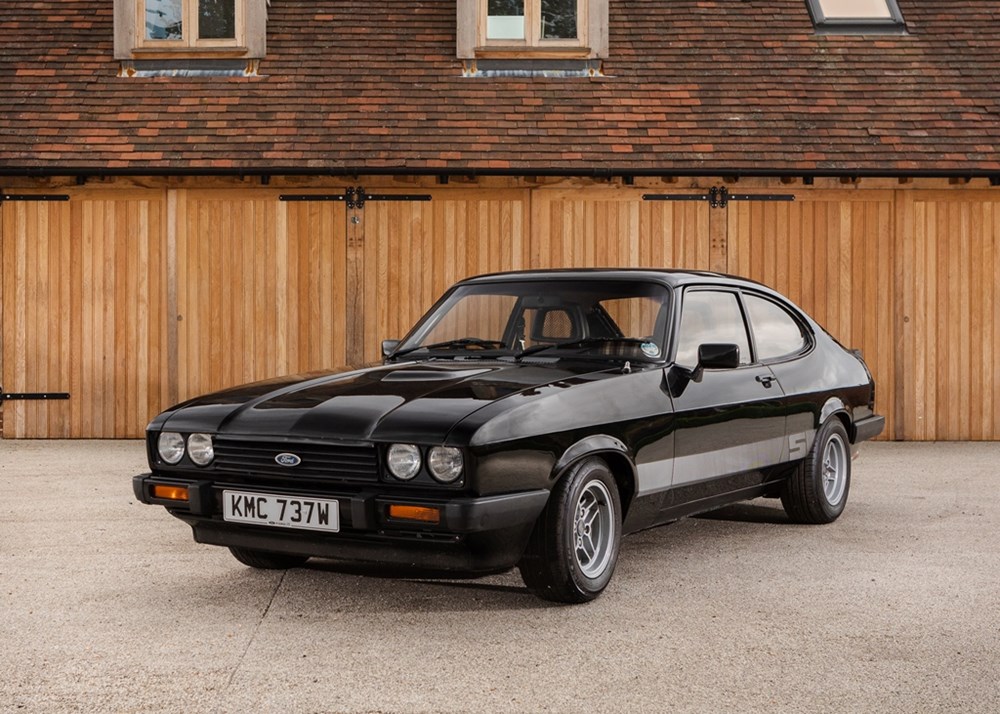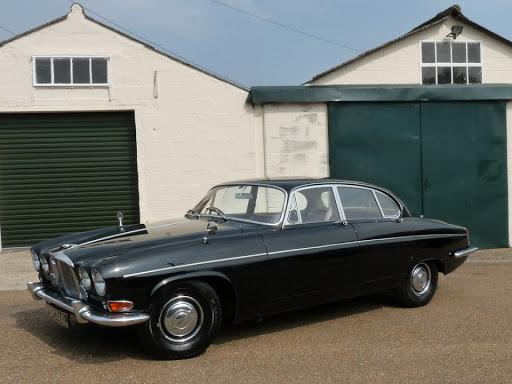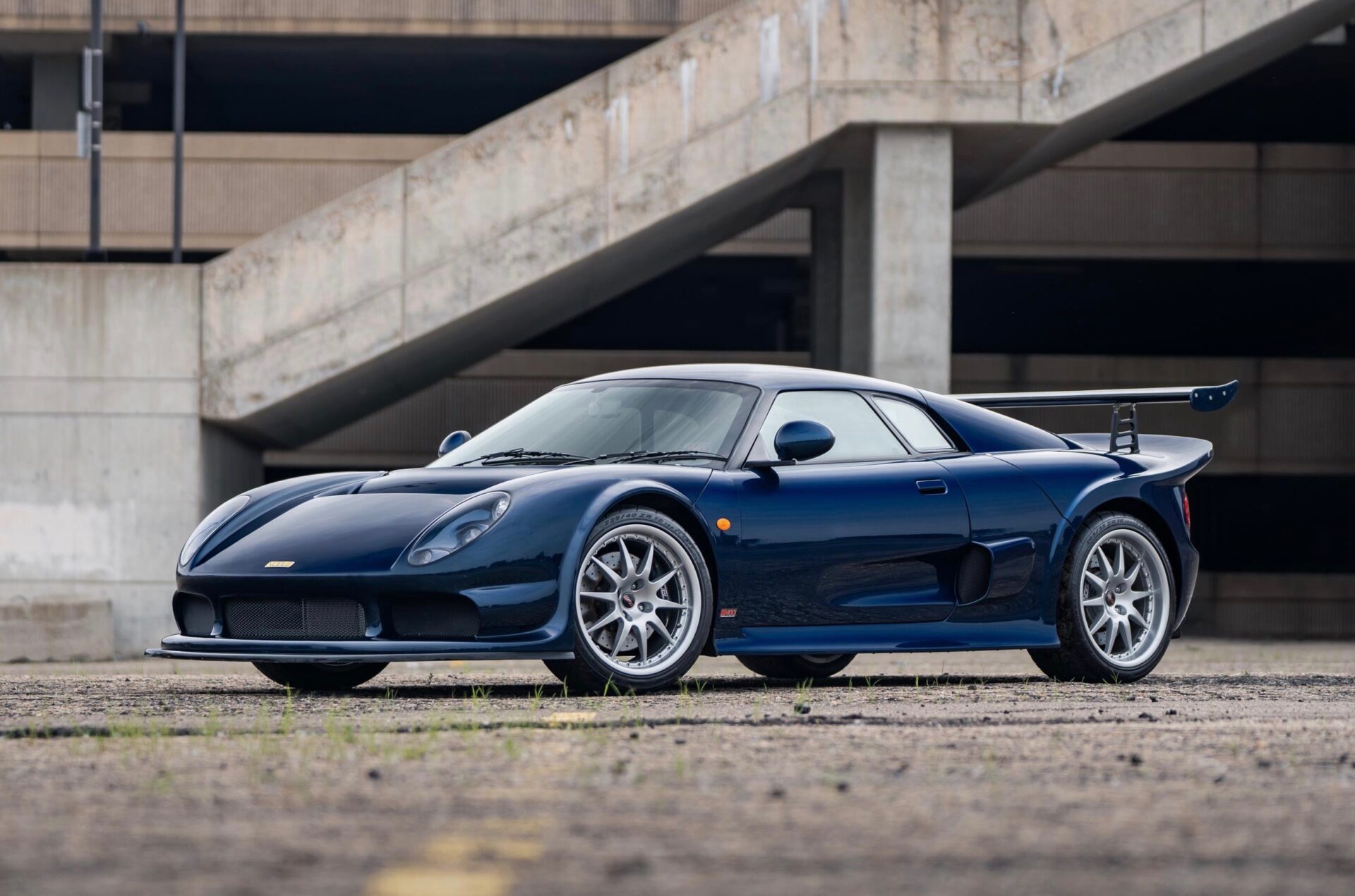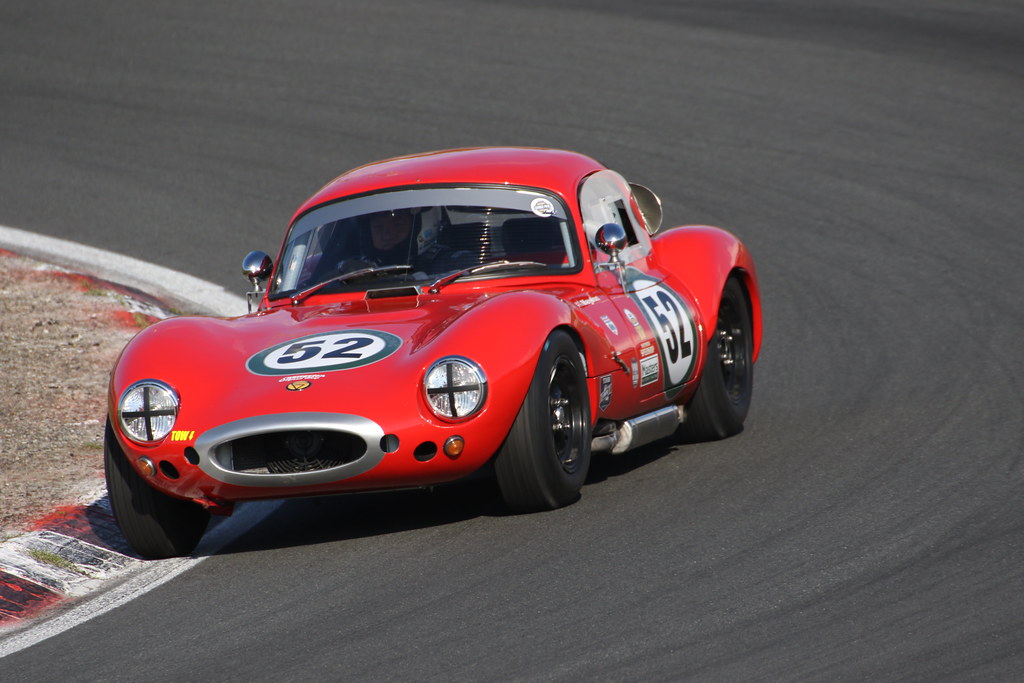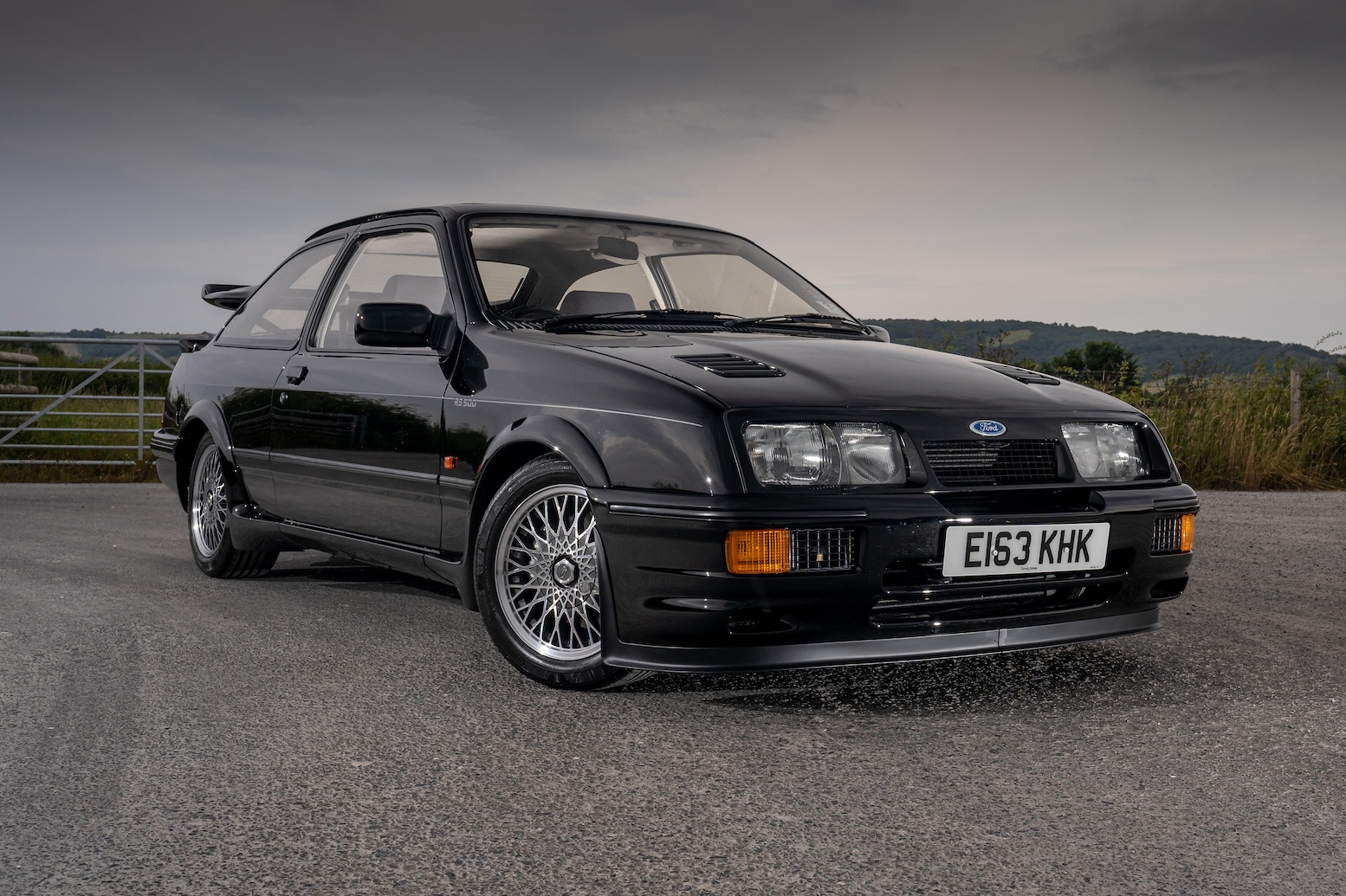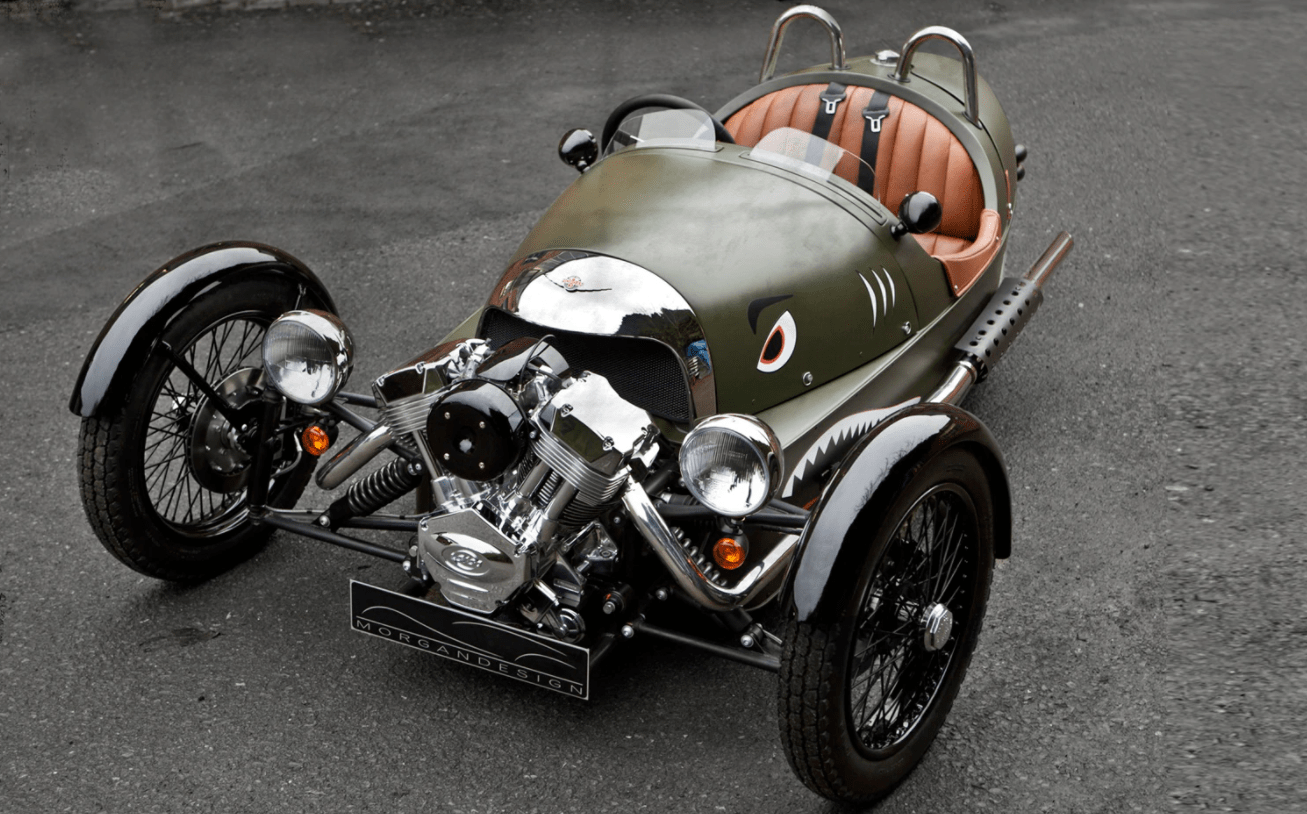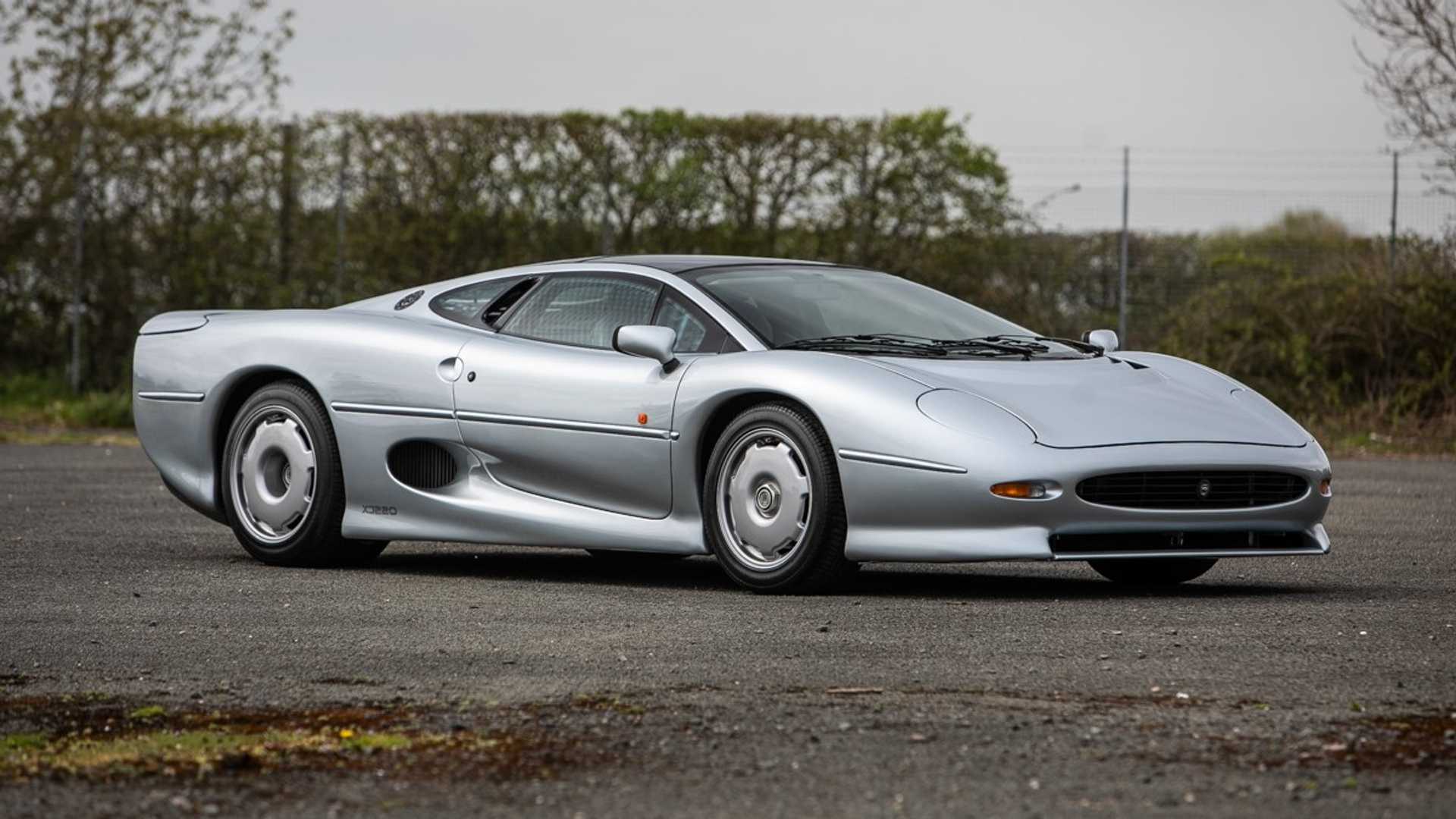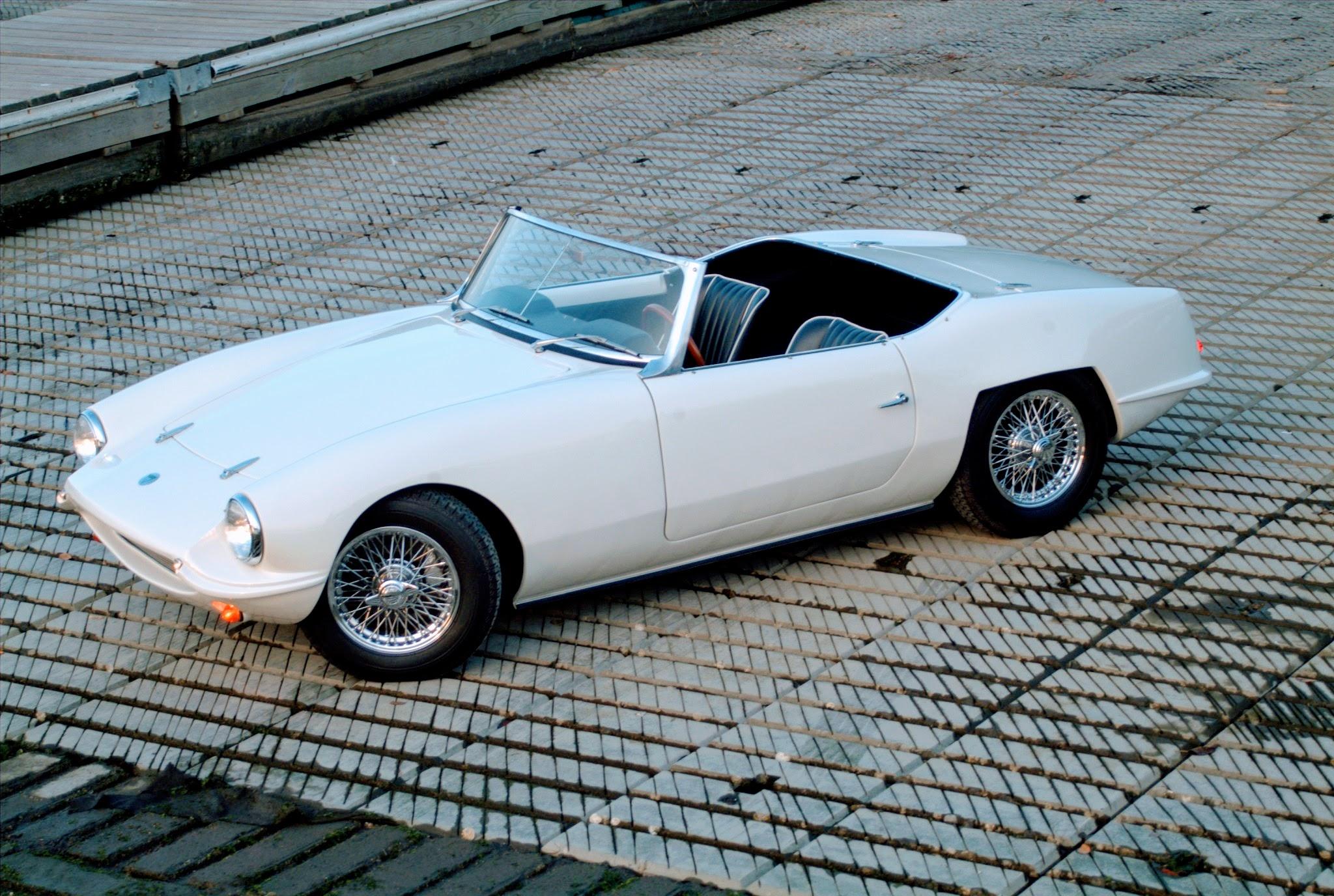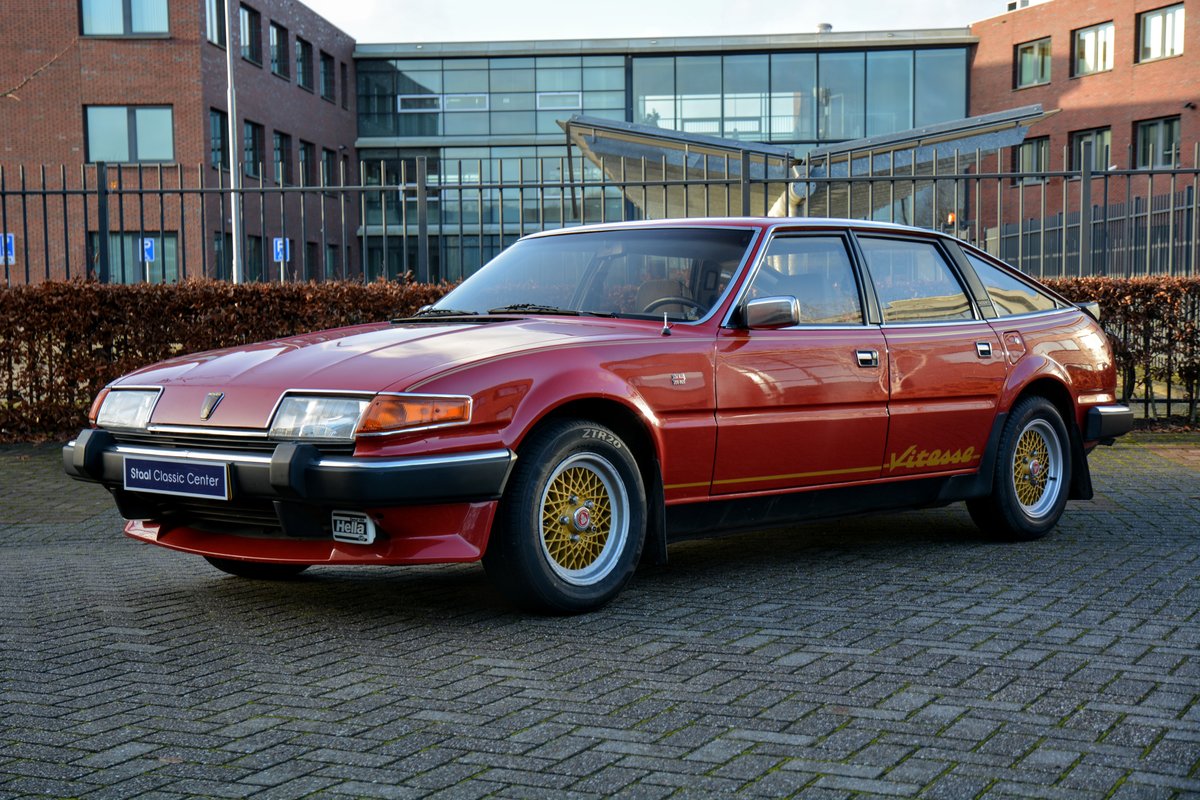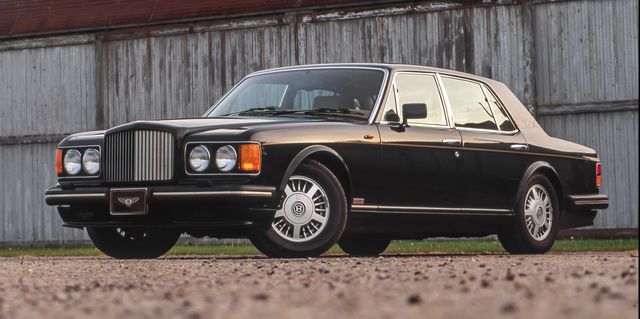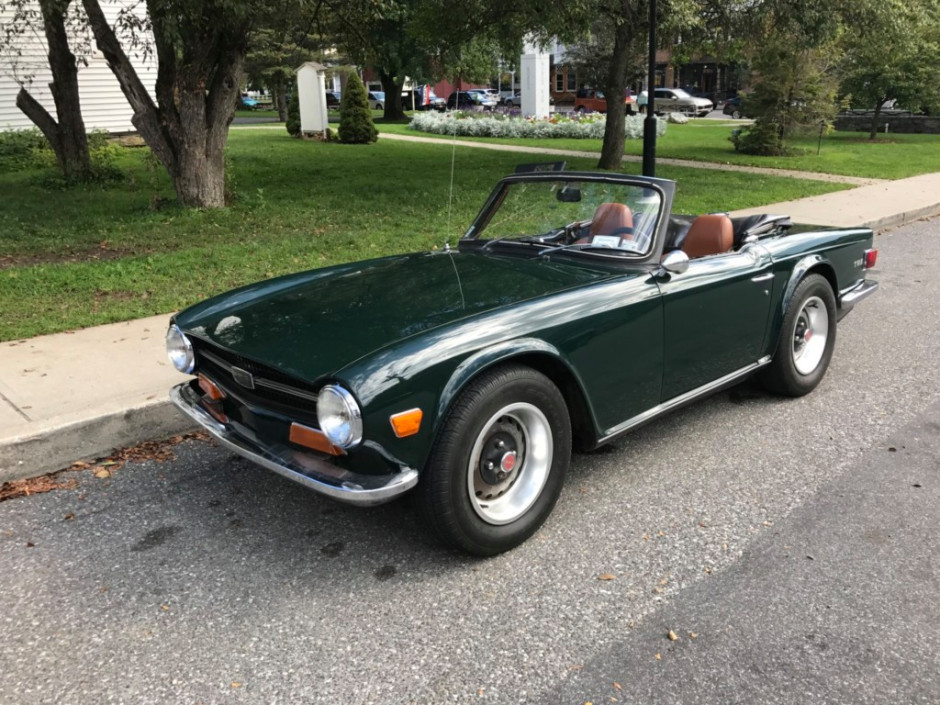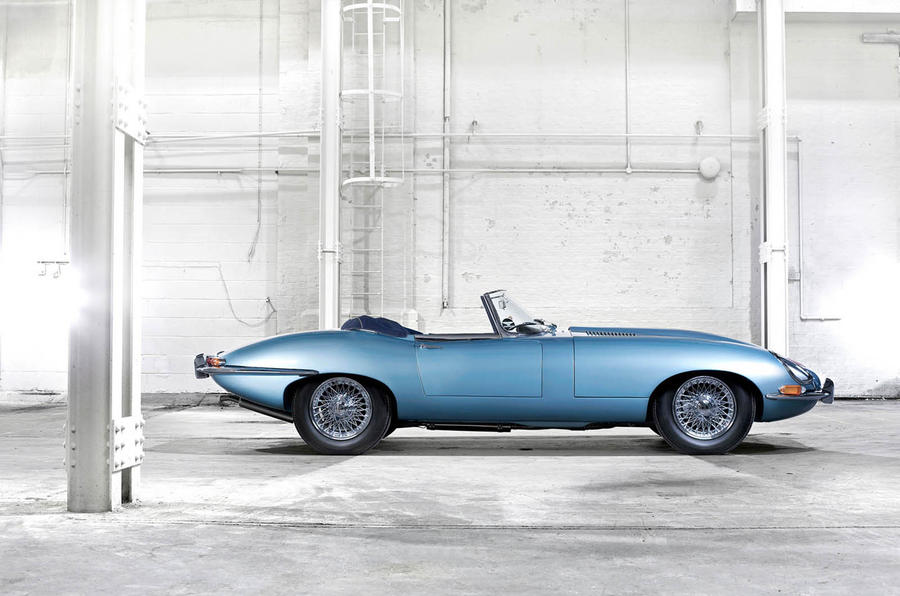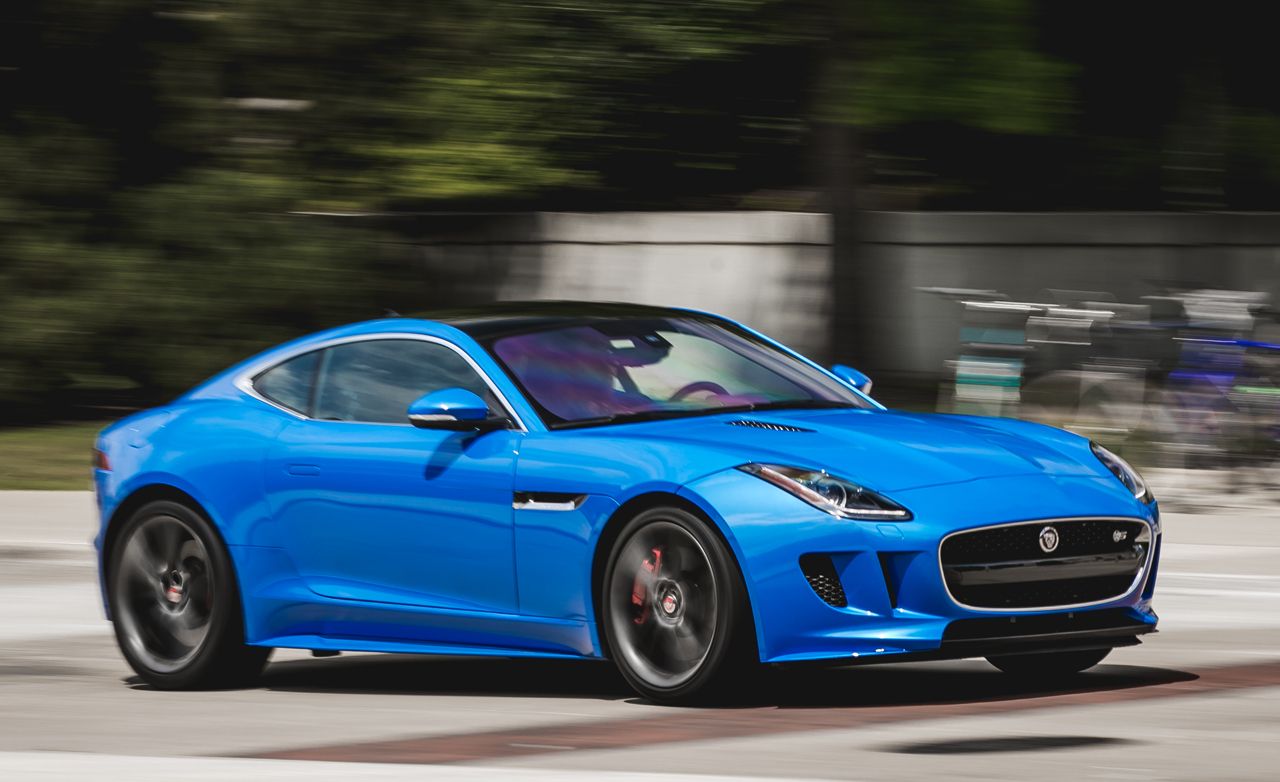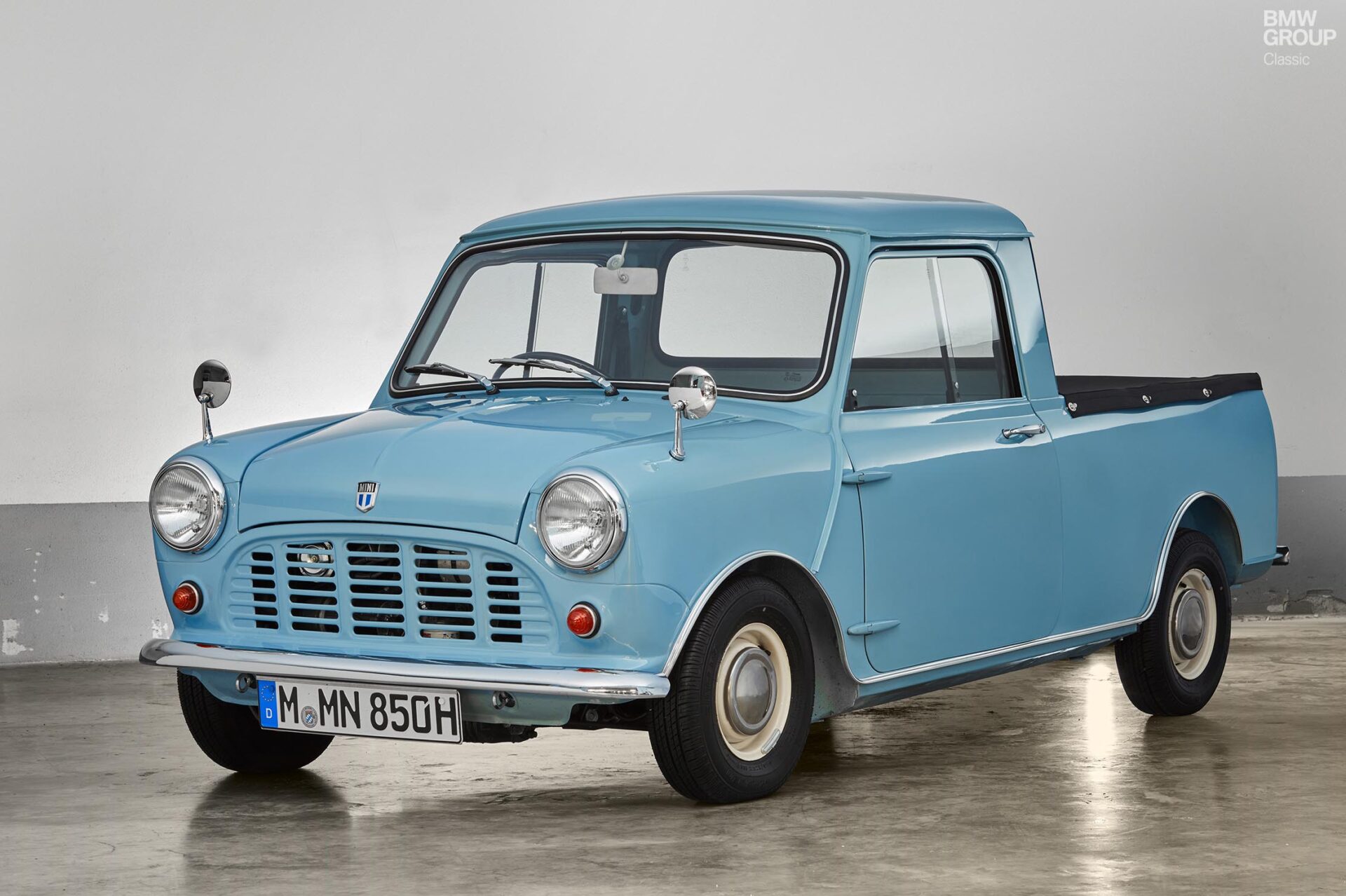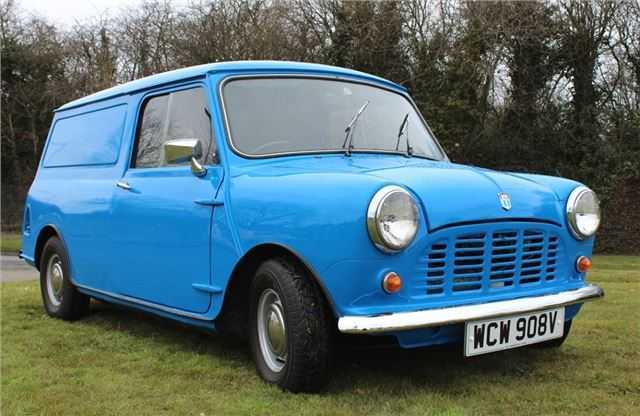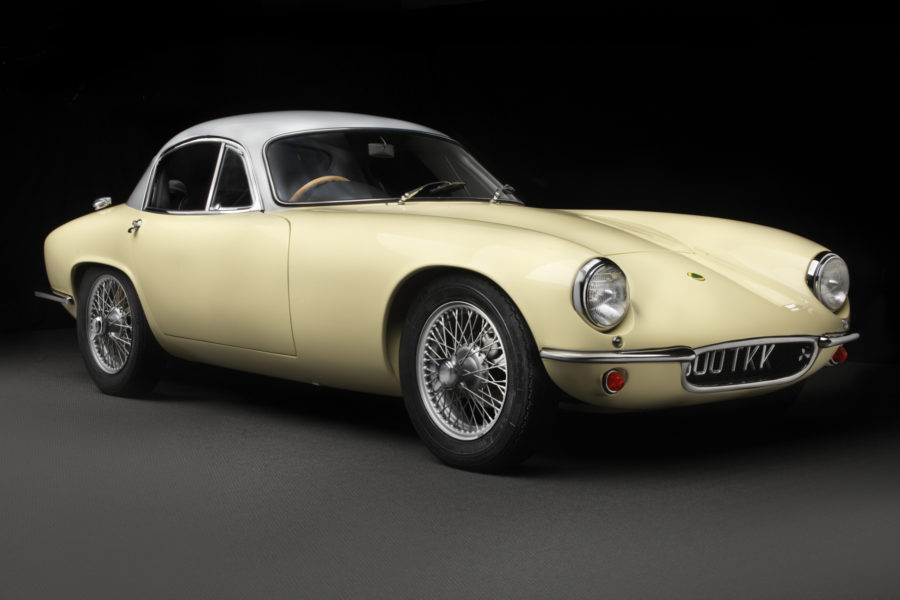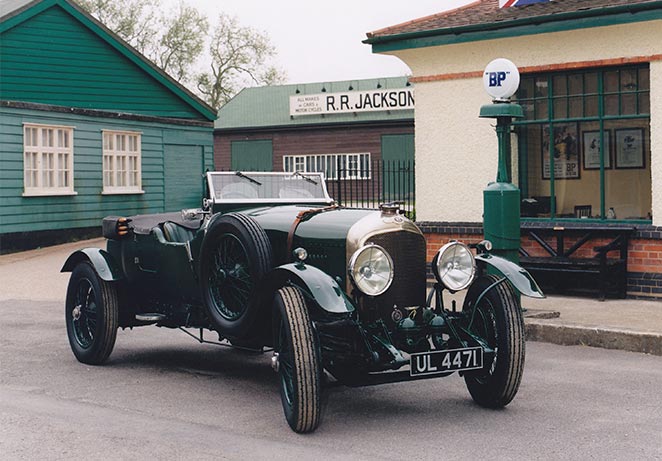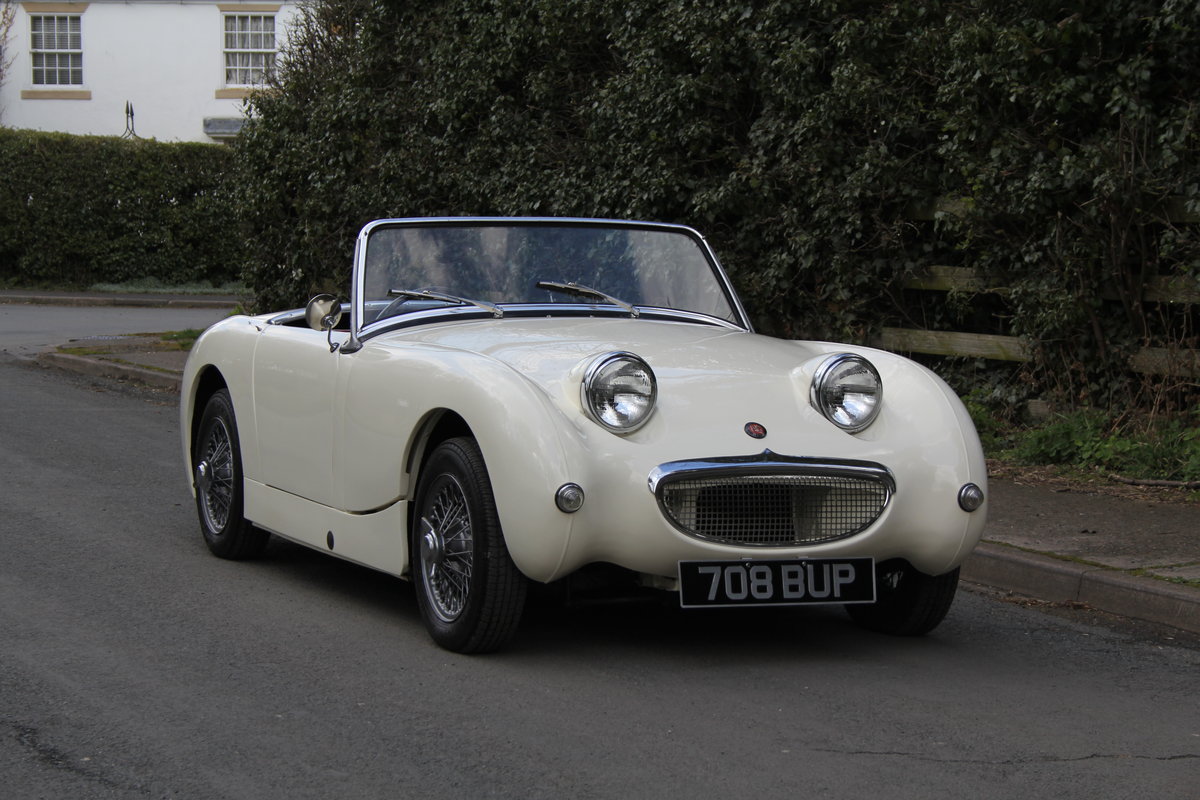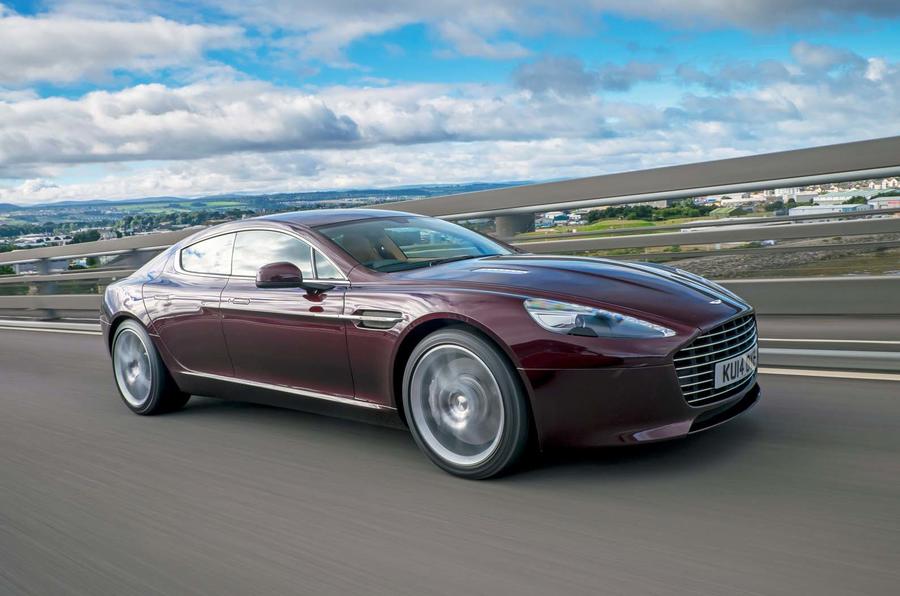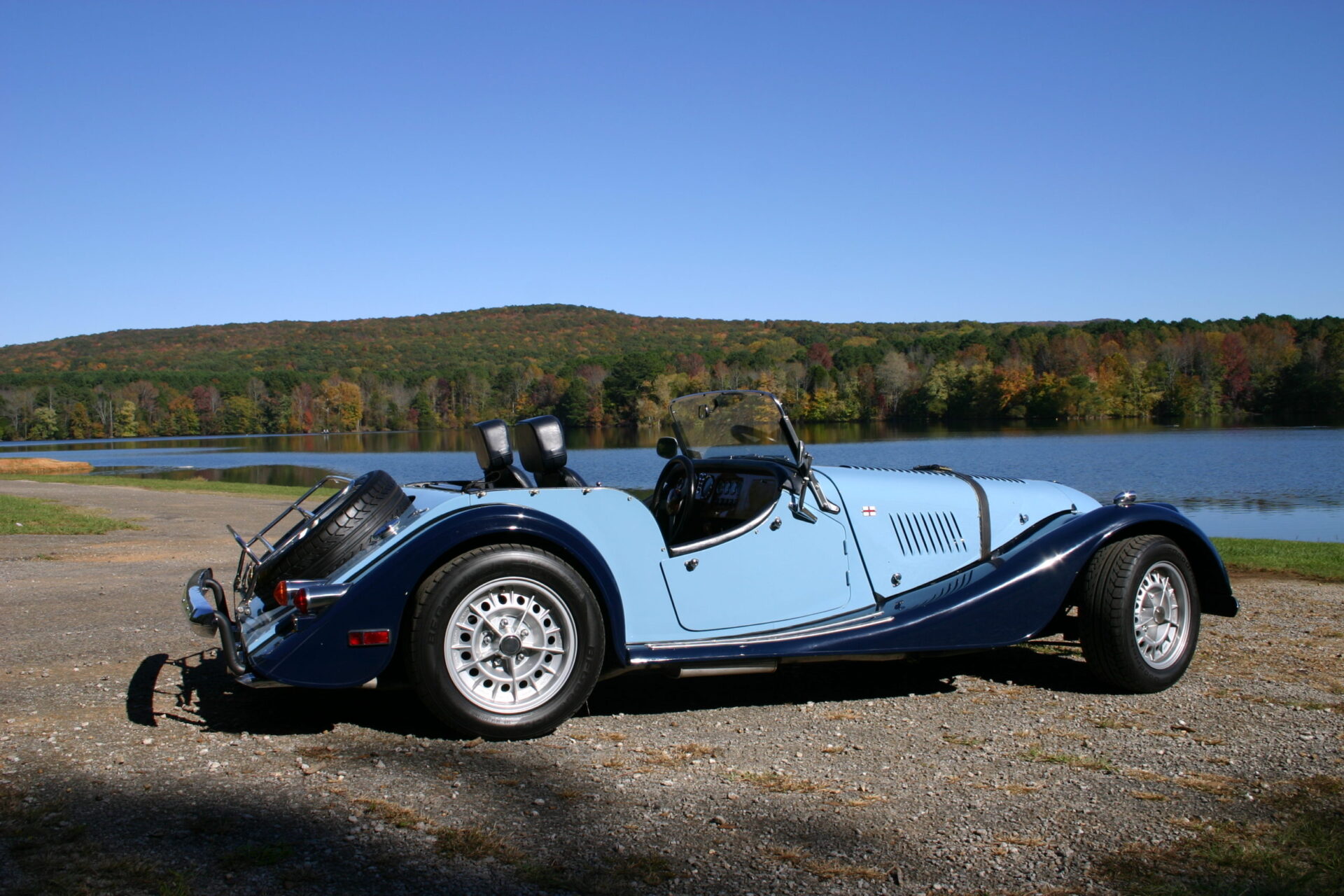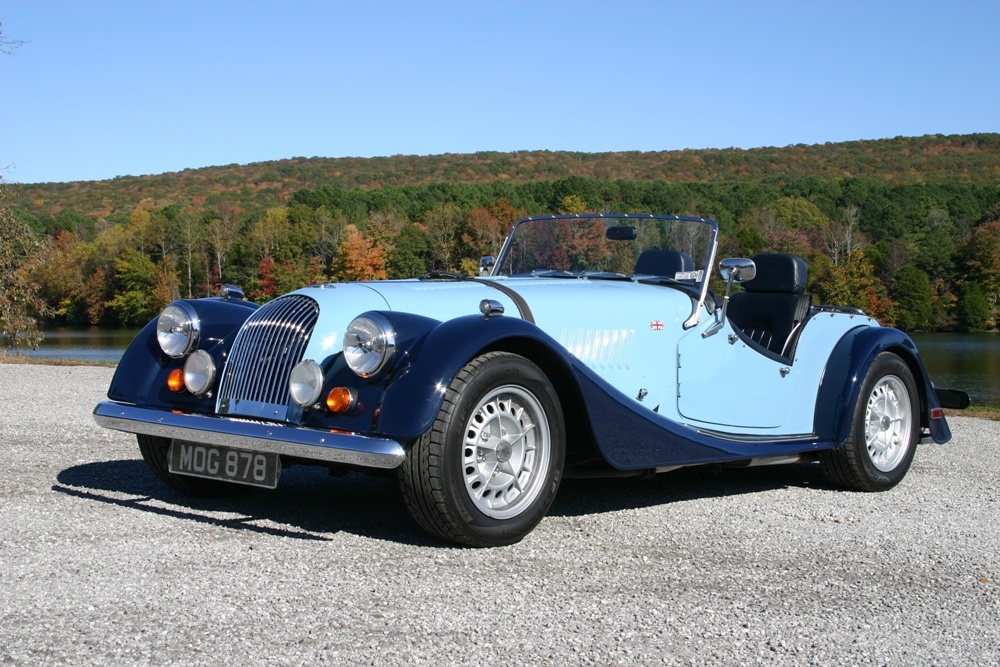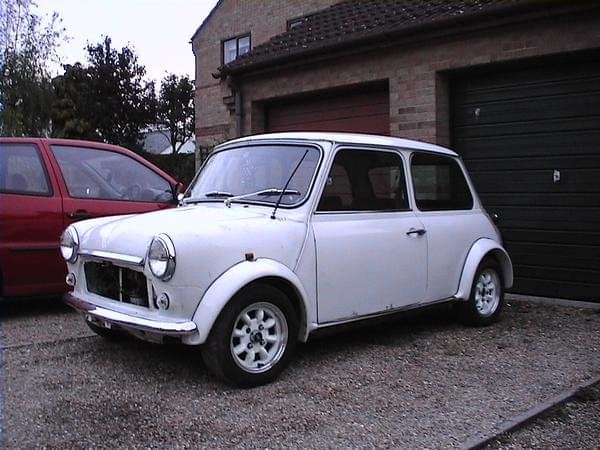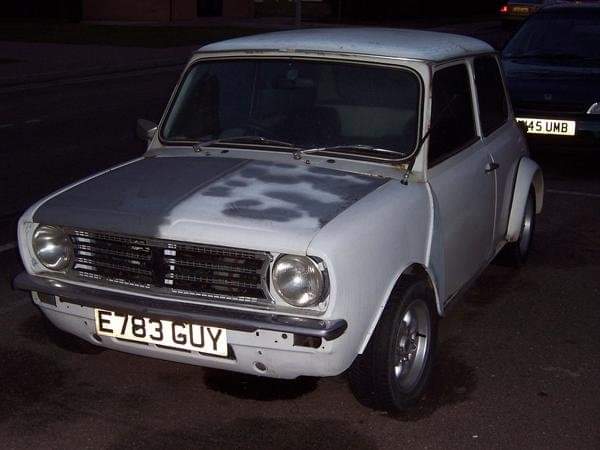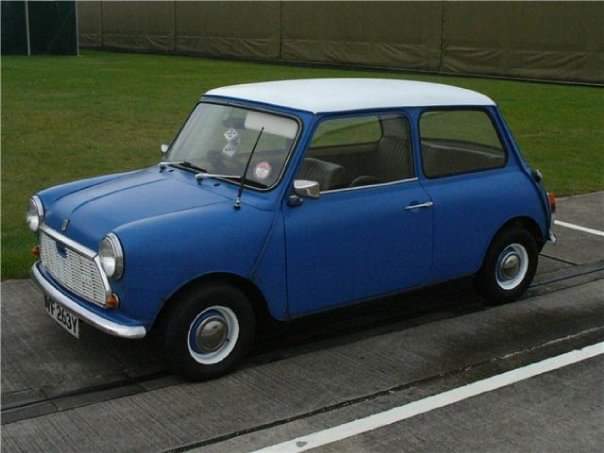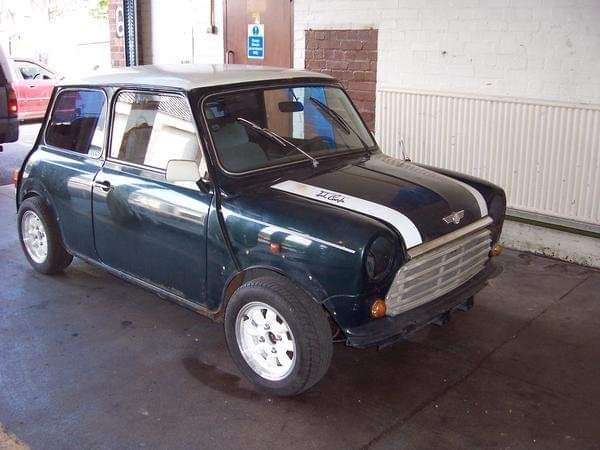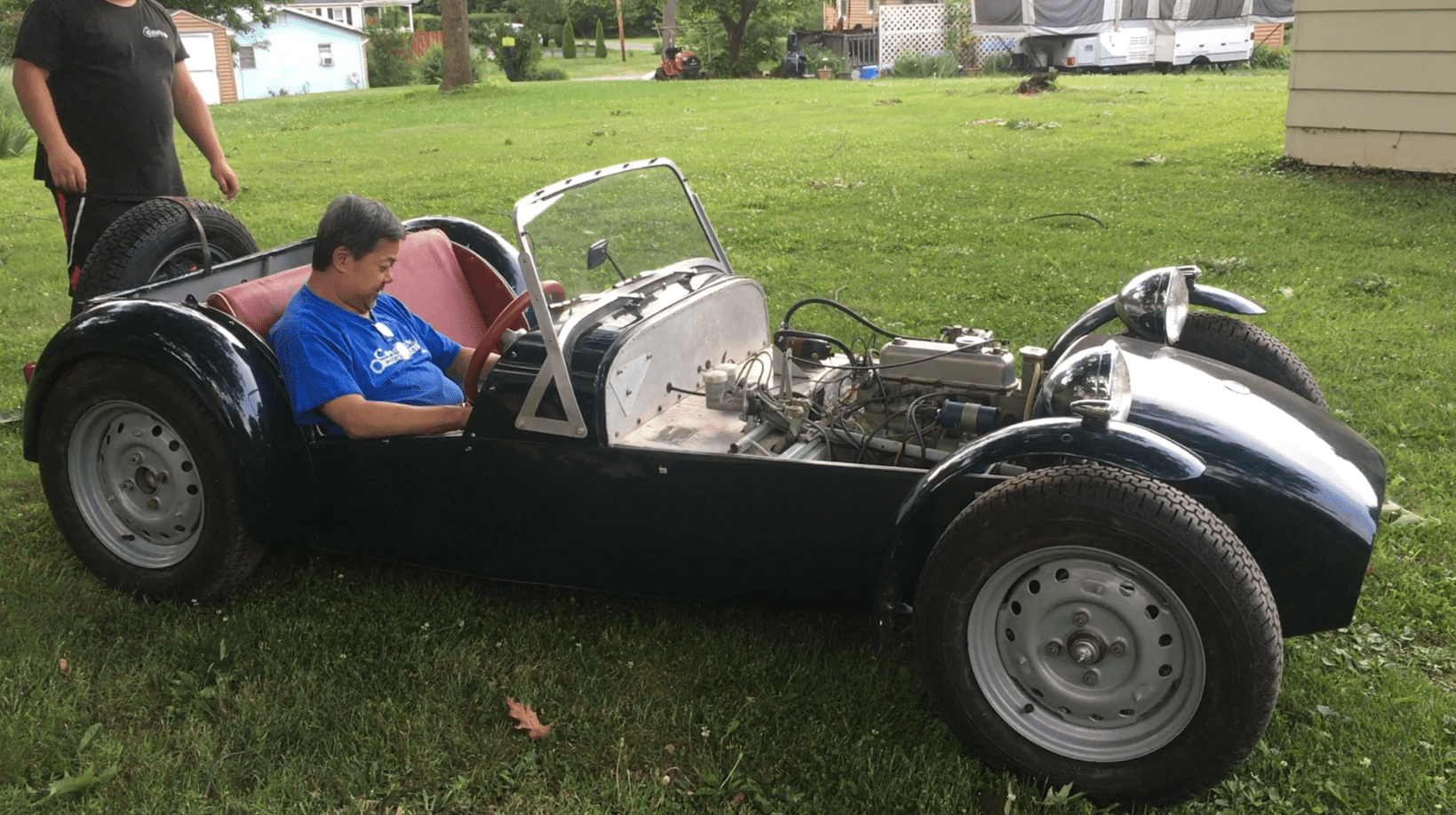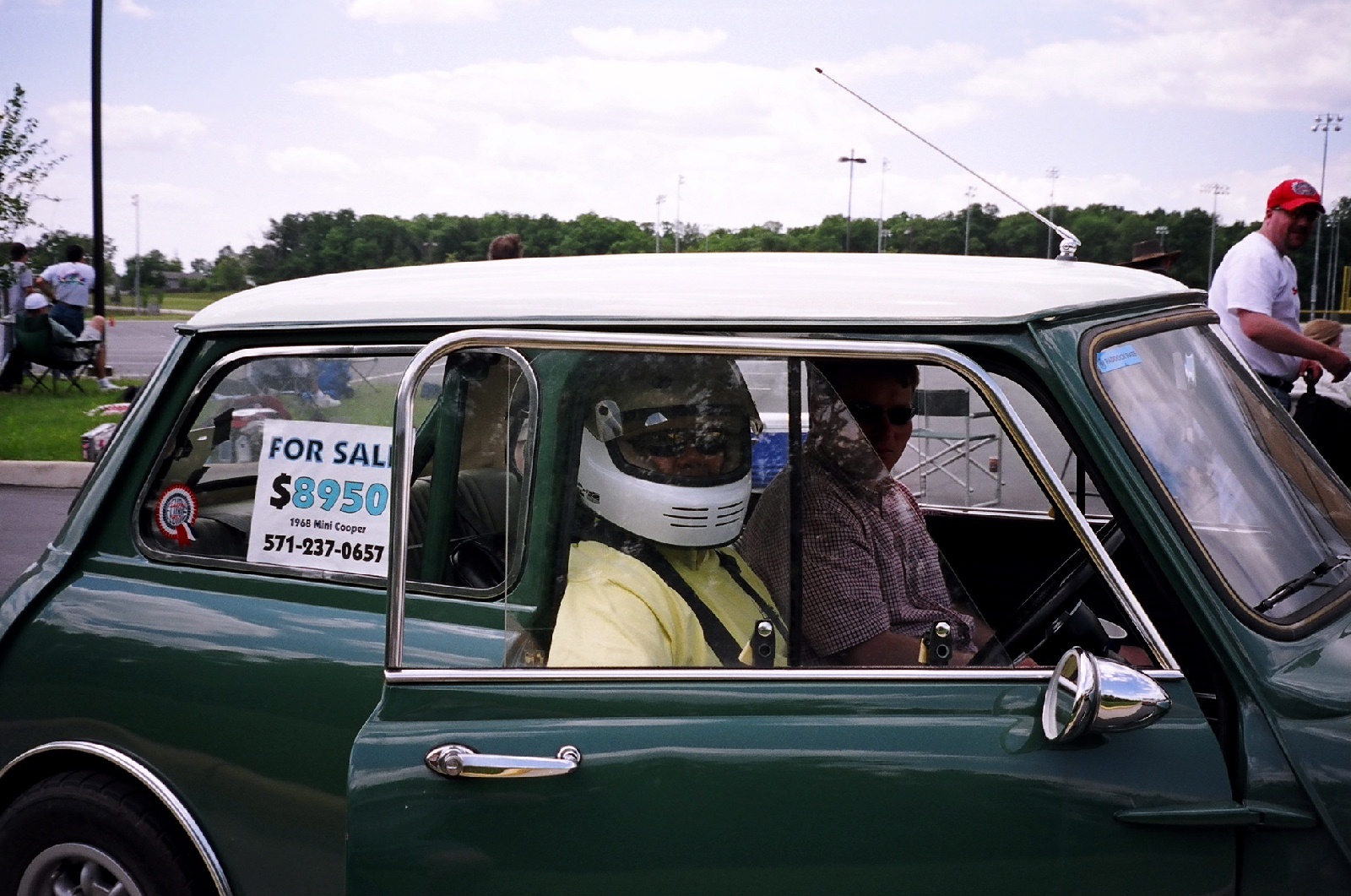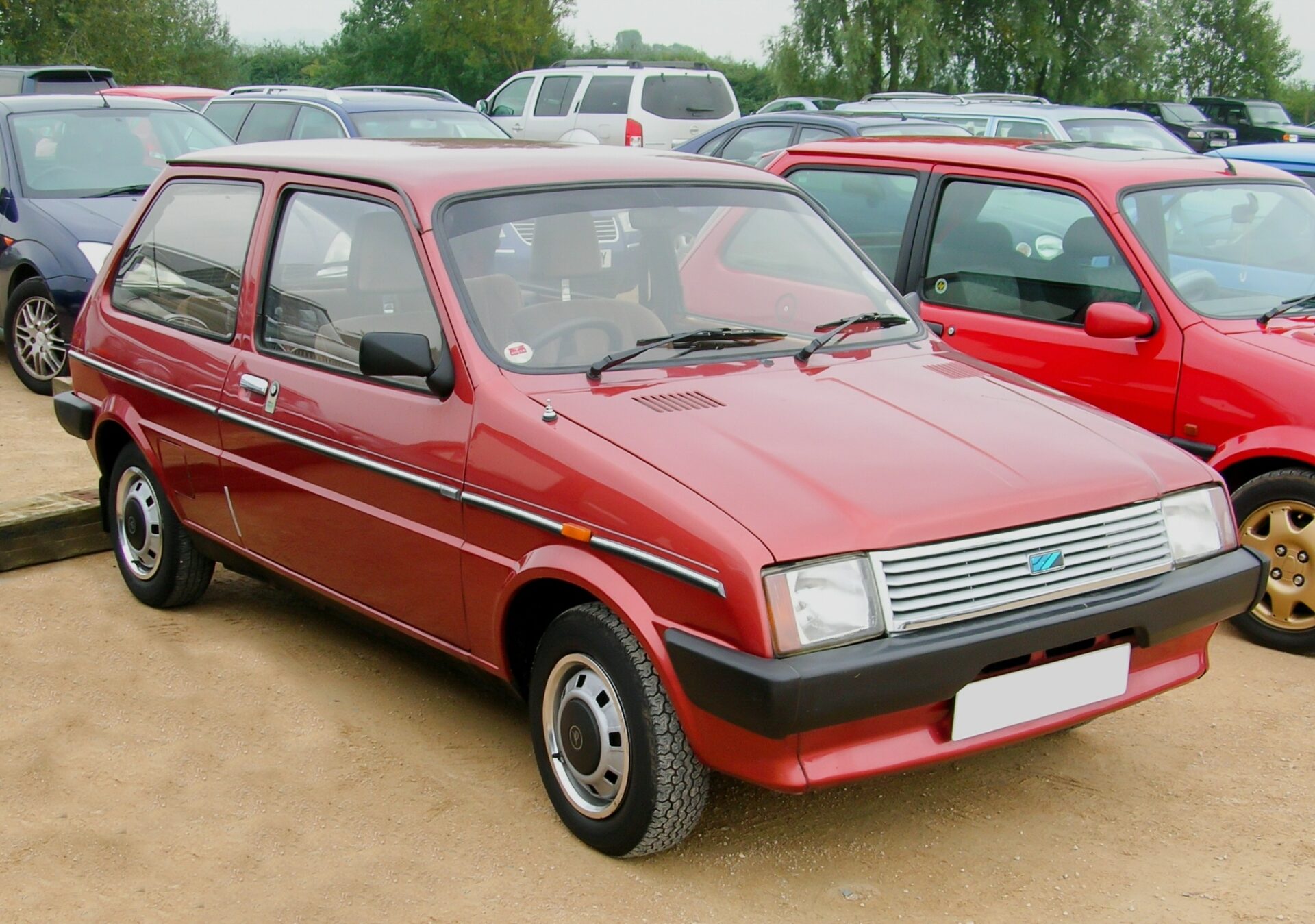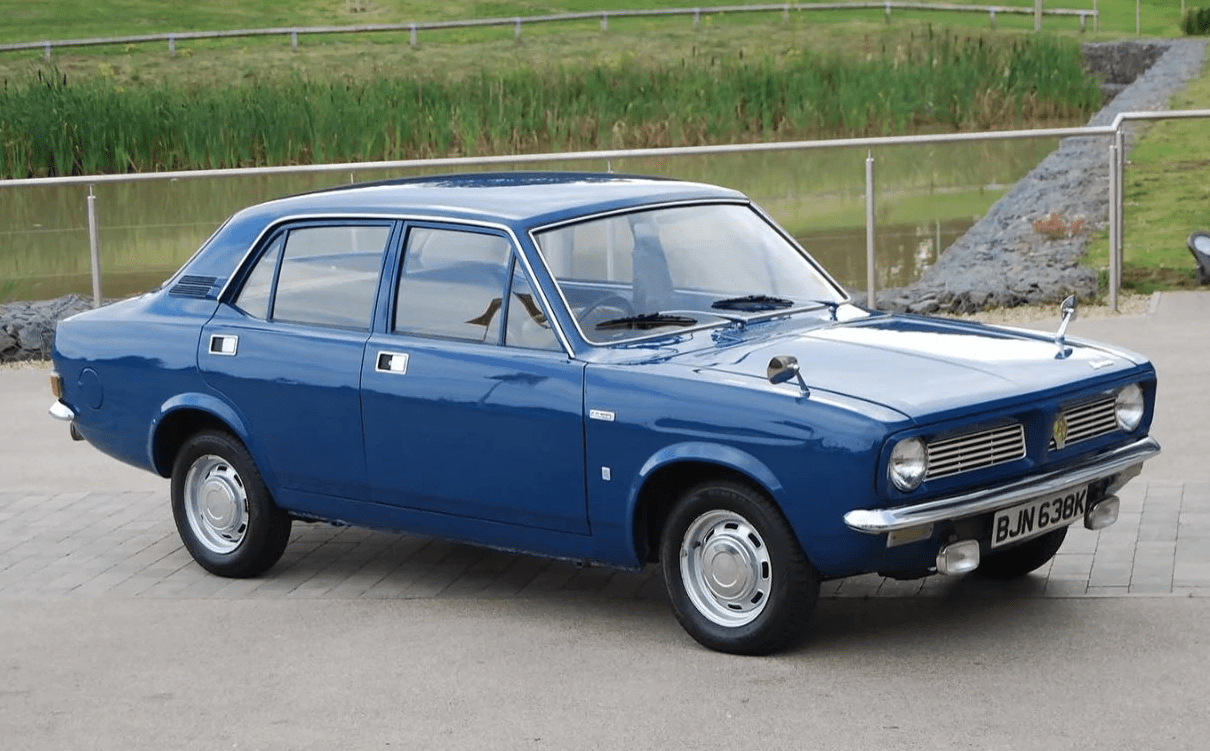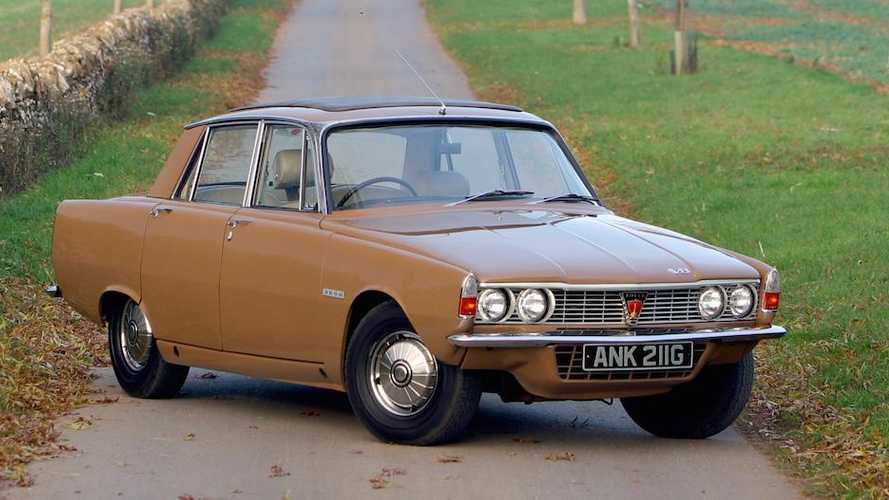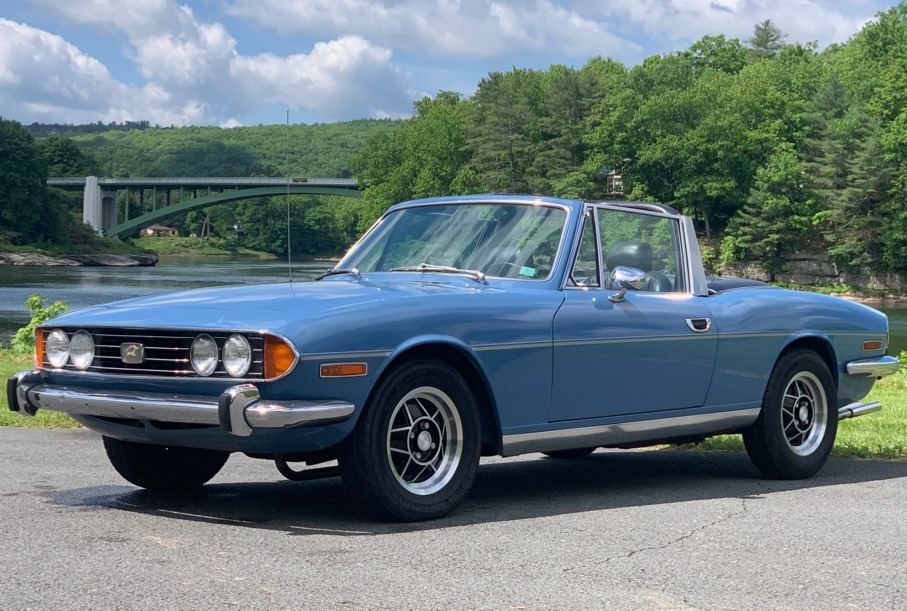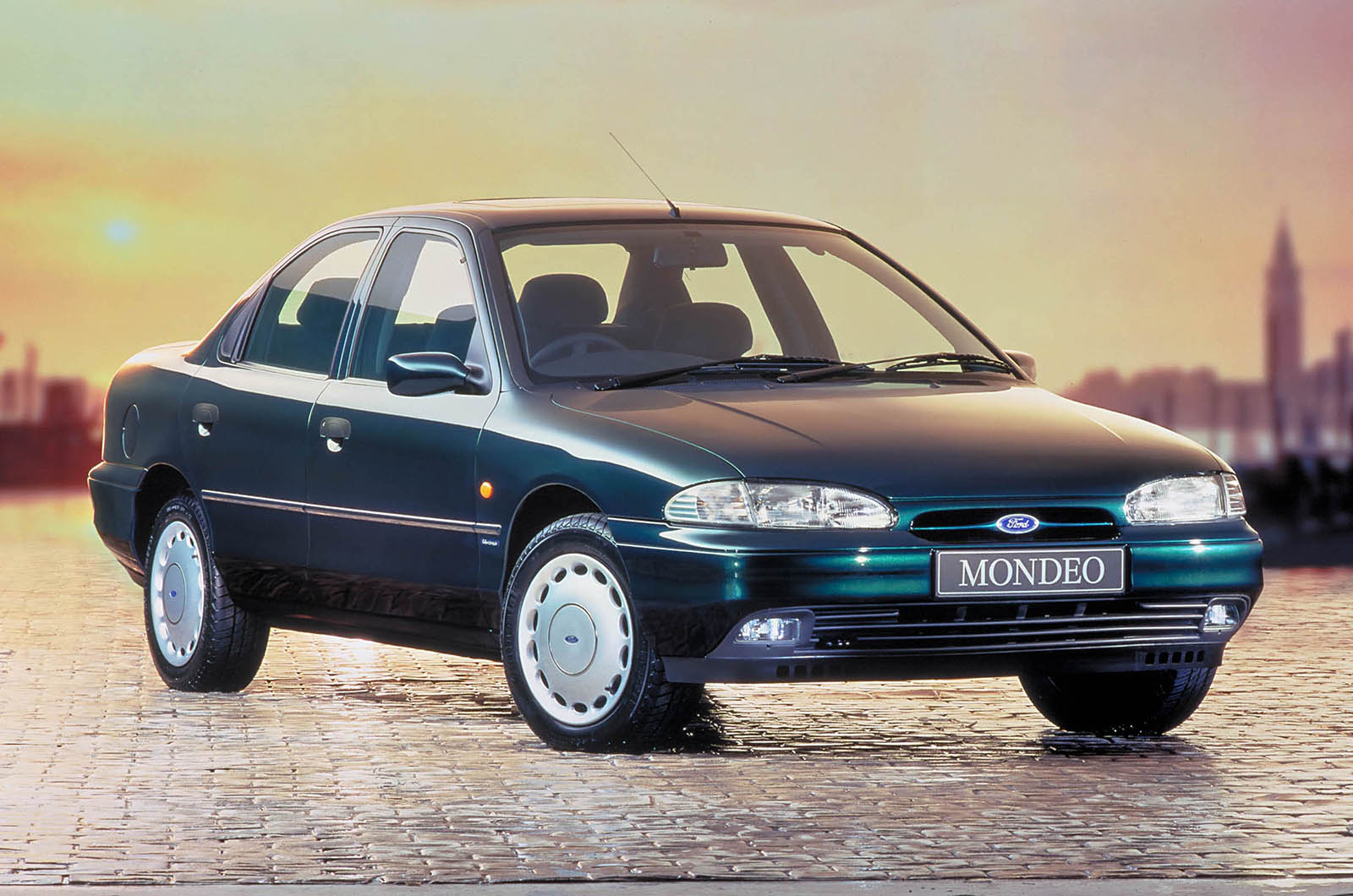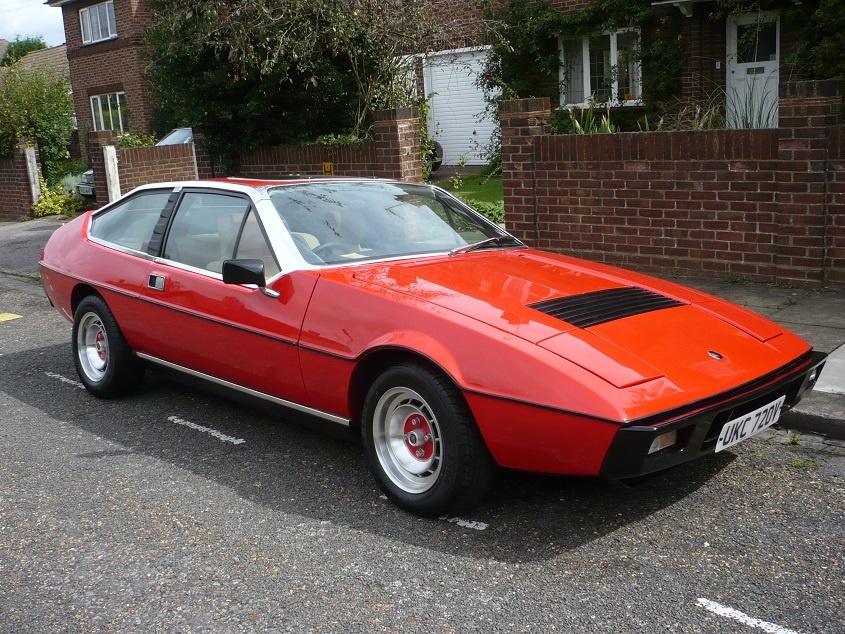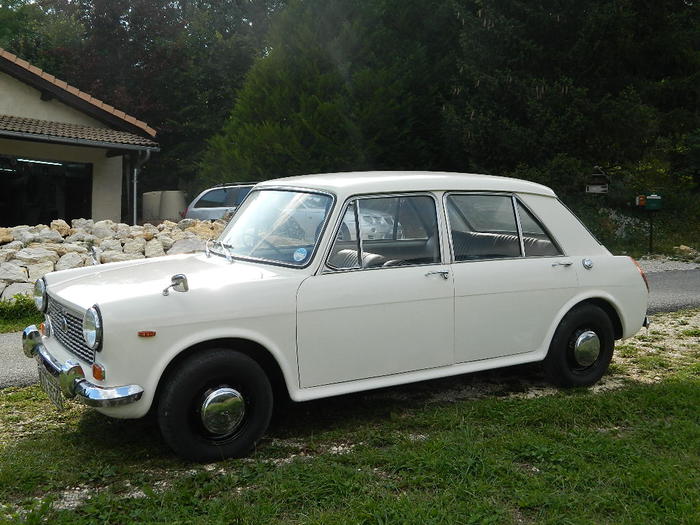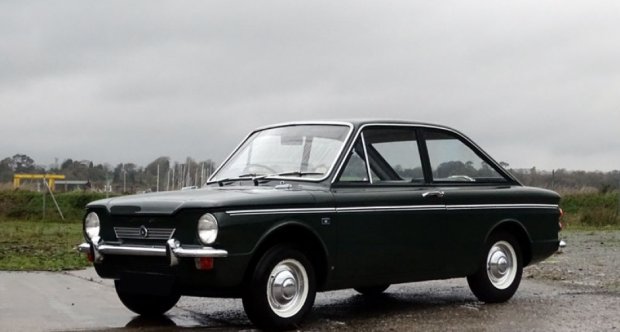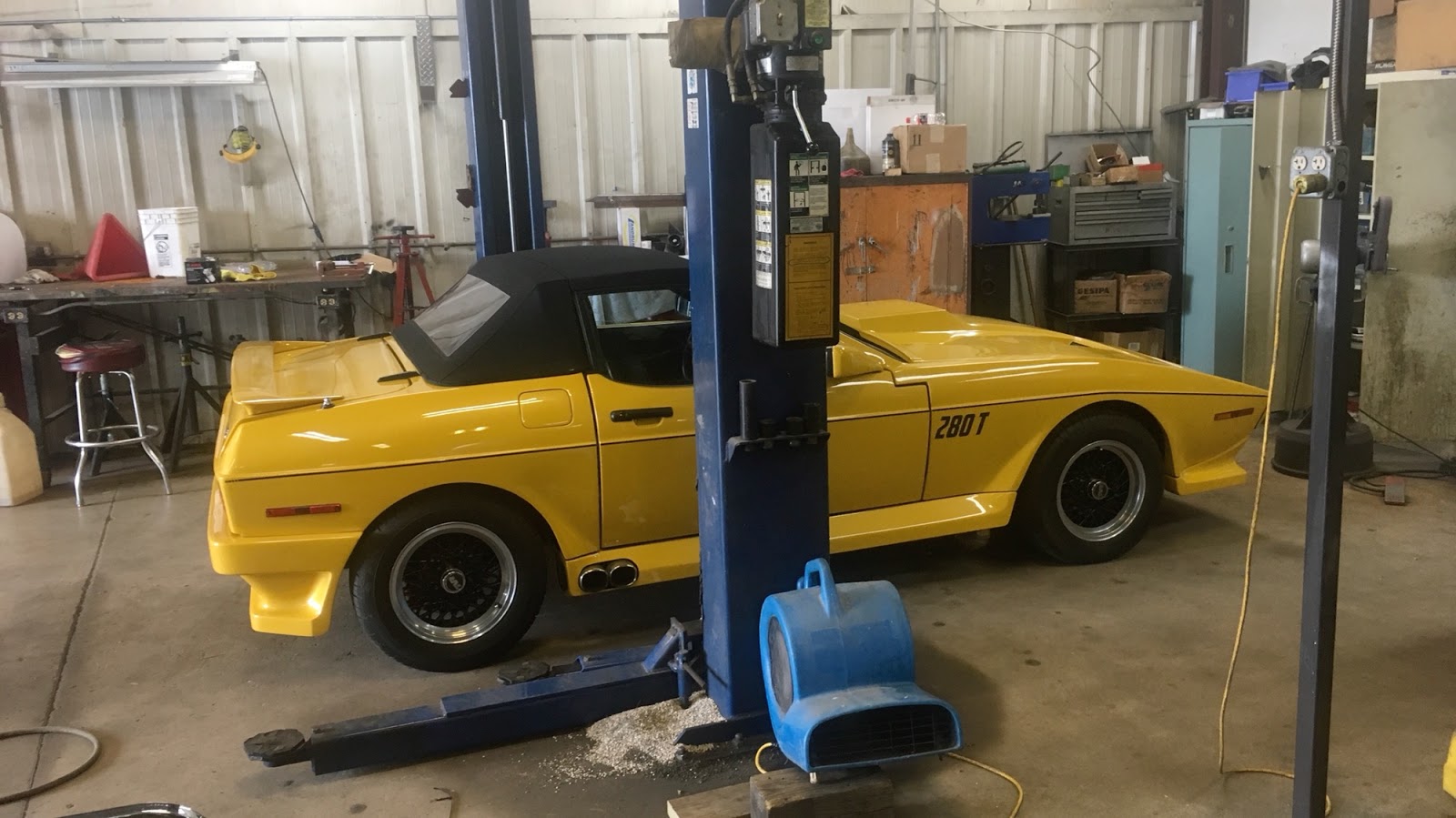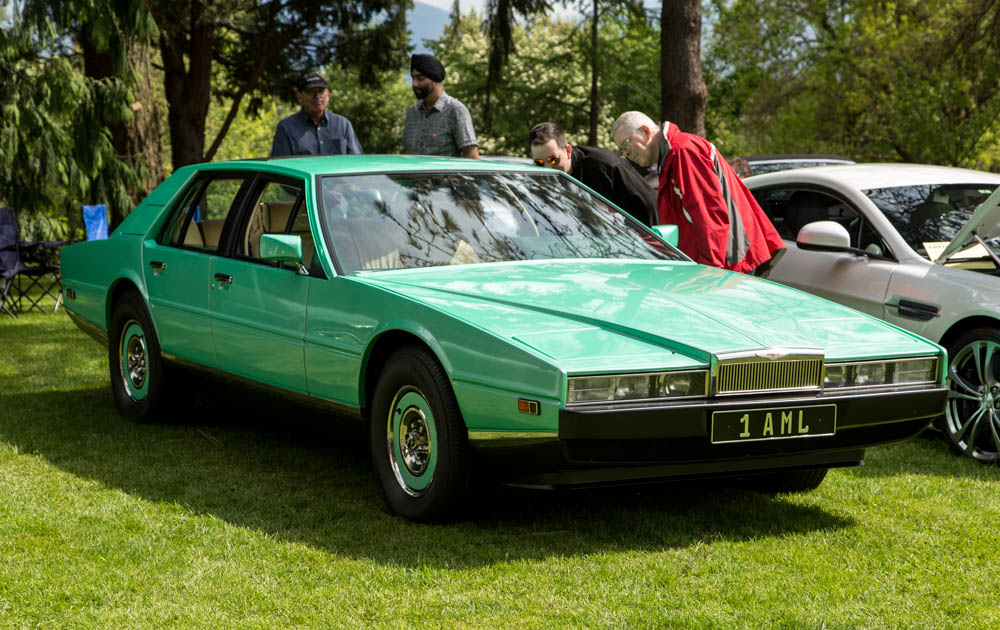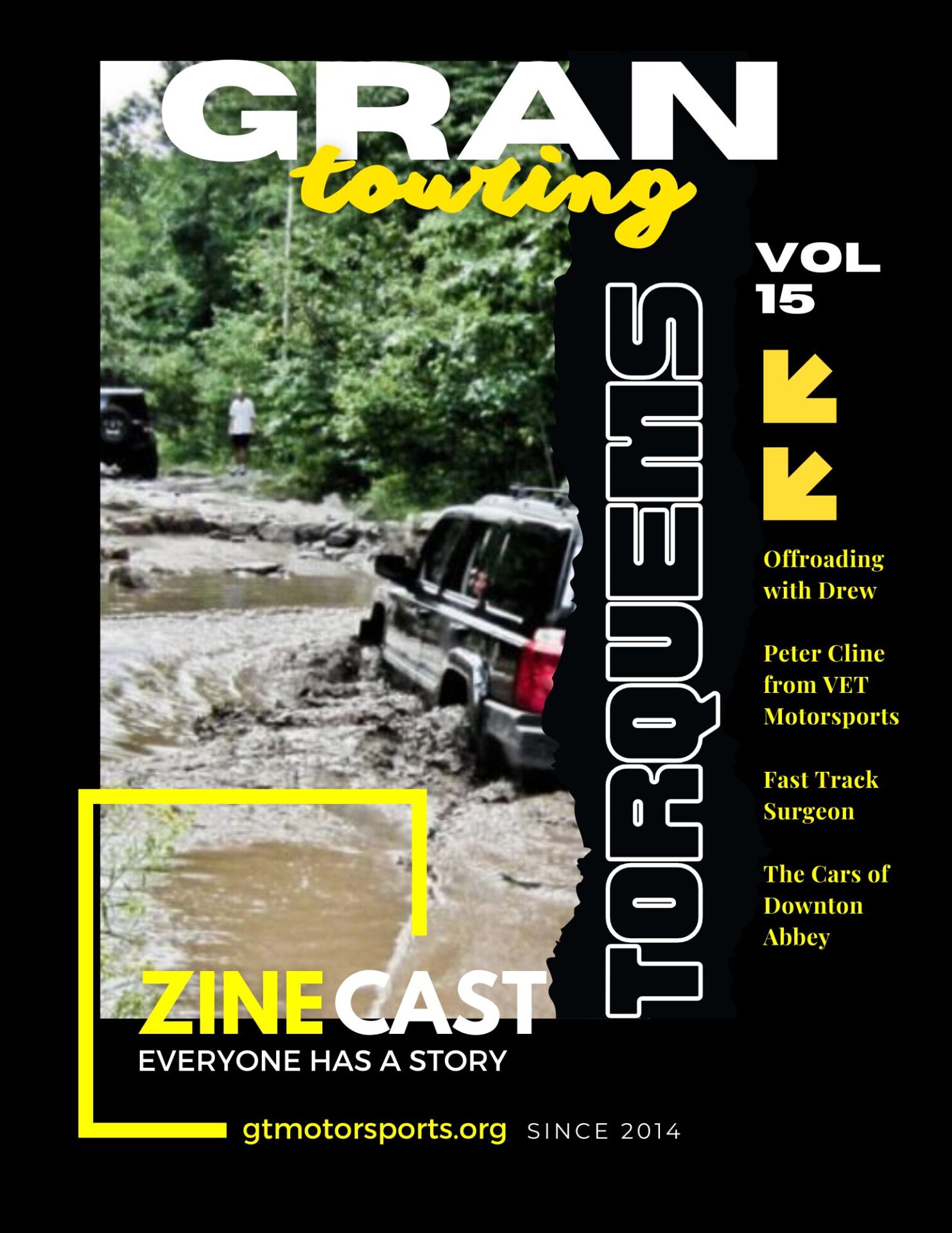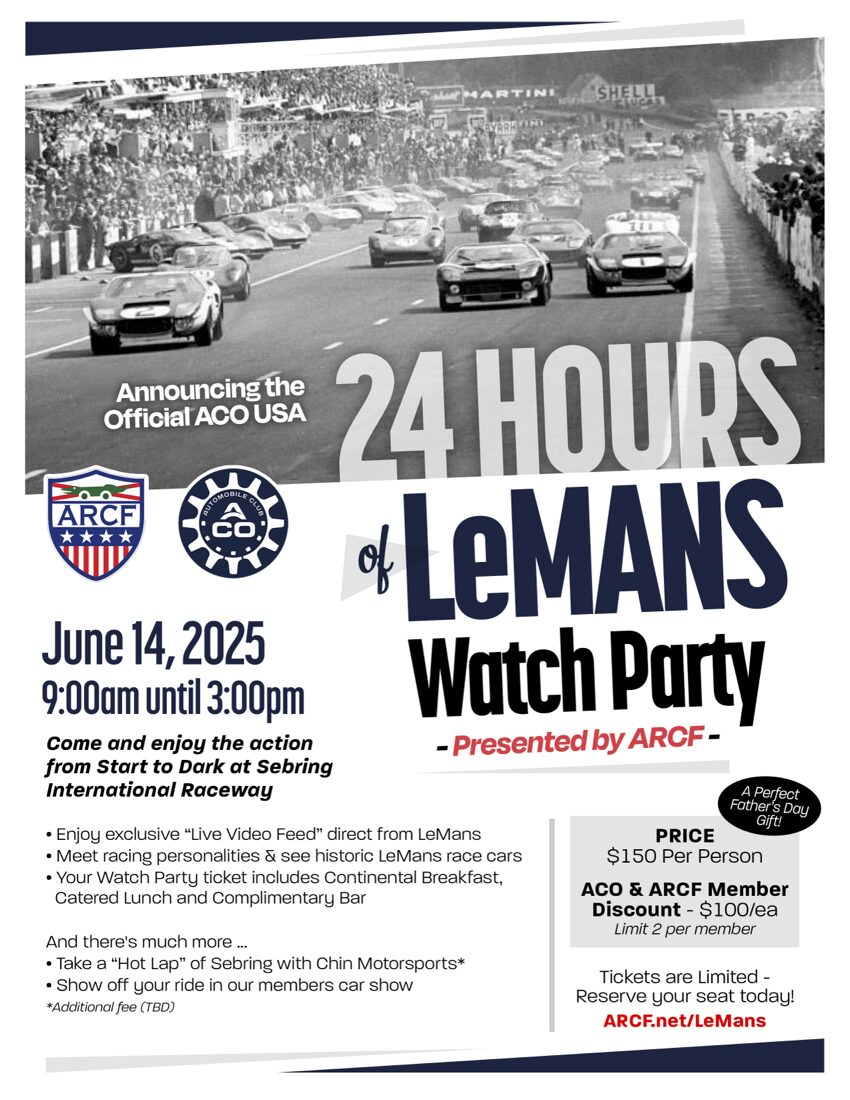Misery loves company… and we recently discovered there are a large number of GTM members who own or have owned British cars. And therefore, we thought it would be a jolly good time to have them on Break/Fix to discuss their experiences and share stories. Get ready for dry wit and a lots of tongue & cheek, as we throw in a couple bonus rounds of What Should I Buy? for good measure in our BRITISH OWNERS EDITION. Join members “The Latton Lads” Steve W & John W, Porsche Al, Matt Y, Mountain Man Dan and others for this hilarious episode!
Tune in everywhere you stream, download or listen!
 |  |  |
- Notes
- Transcript
- Highlights
- Learn More
Notes
Cars mentioned on this Episode
 Bentley Brooklands
Bentley Brooklands Ford Capri
Ford Capri Jaguar MK-10
Jaguar MK-10 2018+ MINI Cooper JCW
2018+ MINI Cooper JCW Noble M400
Noble M400 1964-68 Ginetta G4R
1964-68 Ginetta G4R Ford Sierra Cosworth
Ford Sierra Cosworth Morgan 3-Wheeler
Morgan 3-Wheeler Jaguar XJ-220
Jaguar XJ-220 Elva Courier
Elva Courier Rover SD-1
Rover SD-1 Super Marine Spitfire
Super Marine Spitfire Bentley Turbo R
Bentley Turbo R Triumph TR-6
Triumph TR-6 Jaguar E-Type
Jaguar E-Type Jaguar F-Type
Jaguar F-Type MINI Pickup
MINI Pickup MINI Van
MINI Van Jaguar XK-140
Jaguar XK-140 Lotus Elite
Lotus Elite 1929 Bentley Brooklands
1929 Bentley Brooklands Austin Healey "Frog-Eye" Sprite
Austin Healey "Frog-Eye" Sprite Aston Martin Rapide
Aston Martin Rapide
**All photos used for demonstration purposes only. GTM makes no claims to this material and is not responsible for any claims made by the original photographers or their sponsoring organizations. All rights to original content remain with authors/publishers/photographers.
and much, much more!
Transcript
Crew Chief Brad: [00:00:00] Our panel of brake fix petrol heads are back for another rousing. What should I buy debate using unique shopping criteria? They are challenged to find our first time collector, the best vehicle that will make their friends go. Where’d you get that? Or what the hell is wrong with you at the next cars and coffee?
Good day chaps. I’m your host, Nigel. And on this episode of fish and chips, we’ll be discussing British motors. Tonight we have with us a panel of lads who have gobs of experience with small quirky, poorly wired cars, where convertibles run rampant and the weather is quite contrary gracing the stage with us tonight.
We’ve got Steve Wade. We’ve got Al Benton, Alcina has Matt mountain man, Dan, and Steve’s brother, John, welcome everybody.
Please mind the gap between the train and the platform. This is a Piccadilly line service.
Crew Chief Eric: Now, before we go on about who built who, I have to say, when you look at German [00:01:00] cars, they are precise, albeit sterile and utilitarian.
The Japanese are perfectionists of other people’s ideas, and the Italians have a flair for the dramatic and prefer form over function. But our British friends, they always seem to embrace the send it ideology. The cars don’t have to be perfect. They don’t have to be good. Heck, they don’t even have to be built in the factory.
Most of them being built in an allotment shed, but they are amazing things, aren’t they? So how about we get into it? Why British cars?
John Wade: Well, I used to live there. It’s kind of no bloody choice. It
Matthew Yip: was always odd to see British cars that were convertibles. Considering it rains so much in the UK.
John Wade: Well, not only that, you reckon, right, in a country where it pisses down to rain three days a week, yeah?
And they’re making a lot of convertibles, and they have been since these things were horseless carriages, that they could make a top [00:02:00] today, in the 21st century, that does not actually leak. Apparently that is not in the British, uh, skill set.
Matthew Yip: Well, no, I think they’re trying to uphold tradition. We’re fairly convinced that they would build the cars, Water test them, and if they didn’t leak, they had to poke holes.
John Wade: The point, of course, is if it’s leaking, you’ve now got an excuse for the bugger rusting underneath you.
Steve Wade: Well, that’s the other point, is every British car I’ve ever owned is soluble. So, you know, it’s a recycle job, that’s what it is. And what happens is, people that own them just stop that recycle thing going on, because we fix them, and we drive them, and we complain about them.
But what’s supposed to happen, is you make it, It’s crap, it leaks, it fills the water, it rusts, you go buy another one. The whole idea of the economy.
Crew Chief Brad: What you’re saying is people buy British cars just for the jokes.
John Wade: Oh yeah. Not if I’m for the wonderful electrics, mate.
Steve Wade: The Prince of Darkness.
John Wade: Yeah, they buy them because of the superb electronic skills of the British, who [00:03:00] invented a connector, which is an amazing piece of technology.
A tiny connector, where two pieces of metal touch, and still do not pass any current. It’s an incredible piece of work.
Matthew Yip: Well, what was it, the Jensen Healey that had the main chassis ground in the trunk at the bottom of the spare tire
Crew Chief Eric: well?
John Wade: It’s a submarine thing, yeah, that’s him.
Crew Chief Eric: Is it because everything’s an afterthought?
Like, they go into it saying, You guys silly? I’m still gonna send it. I’m gonna build a car, but they forgot about half of the things they really need to take care of?
John Wade: No, you see, Eric, you’re assuming that there was thought to begin with.
Mountain Man Dan: Yes, because when I lived there, it was a common thing. As soon as everybody got off work, they went to the pub. So I’m assuming that that’s where most of the design ideas came, and it got jotted down on the map.
Steve Wade: Not so much design, just hobbled together with a lot of alcohol, you know, that kind of stuff.
You know, well, let’s see [00:04:00] if this works. Weld that piece of crap over there to over here. If that works, fine, we’ll make 50 of them. If not, we’ll just break it and make another one.
John Wade: It’s not, Steve, it’s Hey, look, if that works, fine, we’ll make 50 of them. If it doesn’t work, fine, we’ll make 200, 000 of the buggers.
Crew Chief Eric: You guys are onto something and Matt turned me on many years ago to, you know, the, the backstory of a lot of car builders, especially Colin Chapman. And I’ve read his biography and one of the things he was famous for because they considered him a madman is he would jot down designs on a napkin and then go into the shed and tell the boys from Cosworth, go build this.
And that was the end of the story. There wasn’t, there really wasn’t a whole lot of thought in it. And I guess that, that theme is throughout all the different manufacturers. Yeah, what’s your point again? Yes, I don’t have one!
John Wade: I’ve yet to see a problem with this. Other than we completely and utterly cocked it up for two hundred [00:05:00] and twelve years.
Other than that, it’s great!
Steve Wade: If you look at the original sketches of Insignosis of the mini, they are literally on a napkin. I mean, literally, you know, he put a few ideas down, he goes,
Yeah, that
Steve Wade: looks alright. Go out in the factory, bang, bang, a few sheets of metal, weld it together, put an engine in it. Well, eventually.
And away you go. I mean, a lot of the ideas were on the fly, right? But that’s also true of a lot of custom cars, right? So
John Wade: Engine is probably a bit flaky.
Steve Wade: Yeah, yeah, yeah. That’s why I stopped at that bit. Because that’s a bit, you know, engine as opposed to complete waste of aluminum. And, you know, petrol. Yeah, that’s more like it.
John Wade: We, yeah, it’d be a good door stop, but it doesn’t produce enough power to keep the door open, you see.
Steve Wade: The original menu was 35 horsepower, mate. That, that was lethal at that time.
John Wade: And they went to the 1275, the big block, baby!
Steve Wade: Yeah, 65 horsepower.
John Wade: God help us, I’ve got kids and a
Crew Chief Eric: wife! Somebody stop me. Is there [00:06:00] such thing in the vintage era of British cars?
Is there really such thing as a reliable British car? What a stupid bloody question. Of course not. So does the same reign true for the higher end vehicles? Let’s say if we start with the Jags. Higher end, okay. Moving to the Astons, moving to the Bentleys, moving to the old Rolls Royces, when they were still owned.
And built in the UK. Is that still true even back then where they were just kind of cobbled together or was there a level of excellence that they were trying to achieve? There was a cut above, let’s say, it was world
John Wade: class cobblers, that stuff. World class cobblers. Yeah. I mean, we’re not talking second rate.
We are talking upper crust rubbish. If you’re gonna go, go big, go expensive, and we still go cobblers. No, they were just as bad, surprisingly. Uh, our brother, our older brother, owns a Rolls Royce. [00:07:00] Uh, yeah. No, it’s not a good thing. It’s the reason only rich people own them.
Steve Wade: Because they can afford the mechanic.
John Wade: That’s right.
Matthew Yip: You know, maintenance? Oh my god, I hate, you know, I hate to think because the production numbers are so small, and depending on what the part is, It might be a standard off the shelf part for General Motors or something like that because it used a turbo 400 transmission with an iron case. So apparently the transmission was quite a hefty piece.
But the same holds true for German cars that for years and years and years people said, I love my Mercedes, you know, it’ll run forever as long as you spend 1, 000 a year to maintain it. And you know, I can’t imagine Rolls Royce is any different except that they use things like mineral oil brake system.
There was a mineral oil for the suspension. They did a bunch of things that were very British. Because They didn’t follow anybody else’s standard for whatever reason, and [00:08:00] therefore, it made acquiring the part to keep running more difficult.
Crew Chief Eric: I just love the fact that we could use the term British as an adjective.
Steve Wade: You know, instead of words like stupid, or ill conceived, or inoperable, you know, those kinds of words you could use as
Crew Chief Eric: well, just as easy, right? I was gonna say, outside of having been born there like you and Steve, Dan was stationed in the UK, Al is new to the British car world, and we’ll get to that in a minute.
And then there’s Matt, who, as I mentioned earlier, before we started the episode, I tried to think back of all the British cars that Matt has owned over the years, at least since I’ve known him. And, you know, he always told me, I’m not really into British cars. And I think I tallied up somewhere in the neighborhood of 15 of them.
Matthew Yip: No, no, no, not British
Crew Chief Eric: cars. But I mean, if you go back to the MGA and the B and the multiple Land Rovers and the Jag with the 350 and the Lotus, I mean, it adds up pretty quick. There’s a lot [00:09:00] of them in there. So I’m wondering between Matt and Al, how did you guys get into British cars?
Al Alsina: Mine was easy, right?
So, you guys know that I got rid of the Porsche. And I really needed something to drive, right? I had gas in my chest. And part of this came out in a previous podcast. When I started looking at cars, I looked at three or four, right? I looked at the Audi, uh, RS5. I looked at the, um, the new 2020 Corvette. And I was looking at, of course the Jag is where I ended up, but I was also looking at the, uh, the LC500, uh, Lexus.
Matthew Yip: Was it a couple of years ago when the F Type was at the DC Auto Show? And, uh, Jaguar has been very fortunate that their designers seem to come up with some really, really good looking cars. And unlike the stuff that you see in most car parks today, It actually looks different.
Al Alsina: You know? Can, can I, can I say, uh, something about that?
When I first looked at that, uh, [00:10:00] JAG F type, it was reminiscent to me of the 1975 ish Z car. Right? That front end style. When I looked at it, I didn’t look at the rear, I’m just talking about the front end. And from the side view, it was Z car all day. So that was part of the lure for me, right? Because it looked reminiscent to something that I had before.
At the end of it, when I looked at styling, the Corvette just was disappointing. Only because it wasn’t out. I got tired of all the hype looking at stuff on video. I really want to touch, right? I want to get in the car drive it and even though I bought the Jag online I went to the dealership and test drove it.
Now, what is it? So I’ve got a Jaguar f type 2017.
Steve Wade: Oh Okay, you got you a proper one. Okay,
Al Alsina: that’s not one of those old ones. Yeah. No, no, no This thing is and it’s It’s gorgeous, right? It’s sexy. [00:11:00] Yeah,
Steve Wade: it’s Indian too, just so we know, you know. Yeah, we agree.
Al Alsina: Right. How do you like that tata? And I say the car is sexy.
It’s got a, it’s got a rear like a woman with great hips. So when I saw
the
Al Alsina: car and I looked at price, now I’ve always heard all the stories about British cars, right? How they are infamous for dying. You have all kinds of electrical, you know, transmission, all kinds of issues. And to date, I haven’t had any right now.
I would say I’ve only had the car since January, but the car has been perfect. There, there are some wonky things about it, but it runs. It’s a marble. It’s got a eight speed transmission paddles on a [00:12:00] fly. And I tell you that it flies at some point, Eric, I said this. That you can go out and you’re gonna you can do a proper test drive and story on the car I’ll let you take it and do your thing and see what you think of it But the car itself leaving Porsche, I just made a turn and that’s where I ended up.
I’m not unhappy with it I would tell you that from a fit I’m not a big guy, but the car is meant to me. I could be a little bit shorter And fit perfectly, right? I find that it’s a little tight. That’s good for what I use the car for. But again, there’s no extra space. Right. I would say that I don’t know how far I would drive the car from a distance perspective.
You know, maybe I drive nine hours, right? I’d have to really have a lot of coffee and be in a different face. But again, I will say that I love the car.
Mountain Man Dan: So out with The new Corvette’s getting such a [00:13:00] bad rap thus far. Do you think buying the Jag was dodging a bullet?
Al Alsina: You know what, I would probably prefer to do that assessment myself versus allowing somebody else to, right?
Because each car that you have is going to have a different, depending on where it comes in off the line, it may be different for you. What is normal for everyone the vast majority people may have a bad rap, but you may enjoy the hell out of it Right from 0 to 60 And taking the twisties it might be perfect right and for what I’m going to drive the car for look I’m not going to take it to the track I’m just going to cruise around town.
It might be perfect, but you know, there’s some of the things that I, I have not heard all the issues, so that’s a little bit too presumptuous for me to say that it would be okay, but without knowing, again, I would though say that I would take that sort of, Criticism that people have any consideration when buying but I would still prefer to take it out Take it for a test drive [00:14:00] and really kind of kick the tires.
Gotcha.
Steve Wade: Can I tell a story about excess?
Crew Chief Eric: Absolutely.
Steve Wade: Okay Yeah, we never tell stories. So John and I some years ago at the invite of Jaguar actually went to Laguna Seca in California. Can you say that? Can you say
Crew Chief Eric: that again Steve? I just like the way you guys say that
Steve Wade: Jaguar. Yeah. Yeah. Jag. So anyway, so they invited us because they thought we had money to spend with those guys, which turned out not to be true, but that’s neither here nor there.
So we go to Laguna Seca and they let us drive every type of Jag they had there. And they, they were some fabulous car. So our, I had driven the S Series at Laguna Seca and I can tell you, it kicks fricking ass. It is a really cool car. You should take it to the track. Don’t let Eric drive it because, you know, I get that point, but certainly take it around.
It’s great. It handles fantastic. You’ll love what the right pedal does. It’s, it is a really, and it looks really cool. Okay, end of story. [00:15:00]
Max Headroom: This is Ma Ma Max Headroom. And what you’re about to witness is one of the most sinister sounding intros to a trailer to one of the greatest epics ever produced in the history of television.
And there’s more.
John Wade: I’m gonna add to it, though. We drove all three of the F types, by the way. The low power six, the mid power six, and the eight. And the mid power six was by far the best of the three by far. Now I’ve got a claim to fame on that. So I’m probably the only one in this group I would think who has passed Roberto Guerrero on a racetrack.
So Roberto Guerrero was one of the instructors in the Jag school that we were in and, uh, got to monkey back with him a little bit. And, um, as you guys well know, a lot of people who go on a track really don’t want to go fast. They want to go back to some liquid cooler deal and be able to tell their friends that they went on the track.
[00:16:00] Well, that’s not in the nature of the people on this conversation, is it? So, Roberto went out with a, um, with a young lady in one of the Jags, who really didn’t think that a track was an appropriate place to flaunt speed limits. So, she was pooling around at about 60 miles an hour, which I was not, and I’d spoken to Roberto Guerrero several times that day, and he said, And I went roaring past him, and just looked over at him, and this expression of pure, utter horror is on his face.
Like, why am I on a track doing si HELP ME! HELP ME! So our claim to fame is that we were taught On a track, Laguna Seca, in a Jaguar, F Type, Barraboa
Crew Chief Eric: Guerrero. Apparently, it must be Lucas laptops over at the Wade household. That’s a pass, I think, for the day. Isn’t that how it works?
Al Alsina: Yeah, right? What engine’s in your Juano?
[00:17:00] So, I, I, I went with the Balance, so I got the V6 Supercharged. Yeah, that’s the best one I have,
John Wade: mate.
Al Alsina: Definitely.
Steve Wade: That was the fastest. That V8’s too much for that car.
Al Alsina: And so all the reports that I, I heard prior to saying that, yeah, you can have it, but it was like, why, right? You want to have kind of a balance between motor performance and handling.
John Wade: The weight distribution is so much better. So when we drove the eights going onto the straight at Laguna Seca at turn 11, every time, and I couldn’t stop it, I’d come onto that straight sideways. Every single time with the eight cylinder. With the six, it would go round that corner like it was on a rail, and shoot straight down the track.
It was a fantastic car. Agreed. Well done. Good choice. Sorry.
Crew Chief Eric: Interrupted again, didn’t I? So going back, and we’ll circle back to Mount Mandan here in a minute, so what’s Matt’s excuse? Thanks.
Matthew Yip: Well, growing up, I had a good friend who is the father of [00:18:00] one of my high school friends, who had Jags. He had a XJ12L with a small block, and then he bought a 78 XJS with the V12, hated the V12, and put a small block in it.
And his brother had a, uh, Coupe with a small block. And I really liked the cars, I mean they, compared to German cars, you’re right, German cars are very sterile. Japanese cars are bland. They’re very sterile, but they’re very functional. British cars are very, are like a club. You know, you walk inside, it’s got a lot of wood, it’s got a lot of leather.
It just, it’s a very clubby feel. So I ended up with the XJ6L because it had a small block Chevy in it. And, uh, I went to take something out of it. And the number of tiny, tiny screws holding the dashboard together were phenomenal. And it reminded me that whoever built this car was probably a cabinet maker before they were a coach builder.
I had another good friend, Dan.
Crew Chief Eric: Dan Rao, yeah. He was on Truck Night in America.
Matthew Yip: And he’s had Land Rovers for [00:19:00] decades. Found a 72 Series II. And it was cheap enough, I figured I’d bring it to this side of the country, and if it was junk, I’d sell it. As it was, uh, it ran. The idiots who had it couldn’t figure out how to start a car with a carburetor, or points.
And, you know, the beauty to that car, the beauty to the MG, MGs, plural, is the simplicity. The Land Rover showed up, it had a, an adjustable wrench in the tool chest. And I laughed, I said, hey, here’s half the tool kit, because between an adjustable spanner and a screwdriver, you can’t take a Land Rover apart, you should just give up.
Idiot. Well, and the neatest thing about the Land Rovers was, even into the 70s, it had a manual priming fuel pump and a crank to start it. It was one of the best party tricks ever. You know, watch this shit and crank it and start right up.
Crew Chief Eric: That was pretty cool. Now, I will say, it was disconcerting riding in that Landy because you sat on top of the gas tank.
So, you know, [00:20:00] but I understand why they built it that way.
Matthew Yip: Well, but you want to talk about Stupid Simple. Yeah,
Crew Chief Eric: absolutely. Yeah, absolutely.
Matthew Yip: You know, I mean, stupid simple, and, and tough as nails. I mean, you know, you, you see them, you see them on the, on the TV shows, you know, and Born Free and whatnot, and they beat the hell out of them, and they don’t care.
You know, now I’ve got that 2000 Disco, and, you know, there, there are all the horror stories about Land Rovers being unreliable and whatnot. I mean, the, the, the Disco is a very comfortable, very competent off road vehicle. The new ones are as well, but the problem I have with all the new ones is they’ve become so glitzy that You don’t want to take them off road.
Not like, not like the old series, you know, the old series you get it You get it muddy. You just take the roof off and take the garden hose to it I had an original mini for a very short period of time a buddy of mine had it had a new remember He didn’t
Crew Chief Eric: have any british. He doesn’t have hasn’t had that many british cars.
Steve Wade: No, no british cars. No, not at
Matthew Yip: all And a buddy of mine has a modern mini and [00:21:00] we were at an autocross The Mercedes Benz Club at the time used the three foot tall cones, and in a real MINI, they look like a forest, but I don’t think people who own new MINIs realize how small a MINI really is. I think the only
Crew Chief Eric: car smaller than the MINI is the Fiat 500.
Matthew Yip: Well, and as I always used to say, if you cut the roof off of a new MINI and took the guts out, you put the new MINI inside, put the roof back on, never know what was there.
Crew Chief Eric: Oh yeah, put the old MINI inside, yeah, absolutely.
John Wade: There’s two reasons to dry clean a MINI. One is, if you wet wash it, it rots away. And the other is, it can’t shrink anymore.
Mountain Man Dan: That’s awesome. For the classic many, I can still say that I own half of one. And that doesn’t, that doesn’t mean that I’m a co owner. I actually own a physical half of a mini because when, uh, I was over there as a civilian, I got to where I was buying, rebuilding, you know, buying ones that were wrecked and things like that.
And one that I bought that had been rolled [00:22:00] had really good chassis to it. So I took that out of one that the chassis was messed up with and with the military to bring things back, I was able to cut the back half of it because I intended to eventually make it into a trailer to pull behind them when I was planning to ship here.
Because, as you know, there’s not much luggage space on them. So I was gonna make a little pull behind trailer of the back half of a Mini, for behind the other Mini. And unfortunately things I screwed up on one didn’t get shipped, but I did manage to put the back half of the Mini in with my household goods and it got shipped over here, so I still do have that.
That’s
Steve Wade: a good story, I like
John Wade: that. If you ever want the experience of driving a Mini sized car that will out handle and out accelerate a Mini very well, go get a Lotus Elan from the 1960s. Those things are devastating little cars. The car that the Miata is based on. To the point where they were almost scary.
They were unbelievably fast. Very few cars keep up with those.
Matthew Yip: They’re way more complicated than the 7, but at the same [00:23:00] time they’re not. Because there’s nothing to be complicated.
John Wade: They’re actually not very much more complicated
Crew Chief Eric: than the 7 at all. Bigger tubes. Bigger tubes.
Matthew Yip: And my Lotus is the definition of simplistic.
I mean, it’s one of the last factory built 7s. But that’s another car that, you know, an adjustable wrench and a screwdriver, and you can take that thing apart and have it in pieces. And, you know, the real irony is, you’re talking about, uh, what was it, 35 horsepower in the original Mini. My Lotus has the Austin Healey Sprite motor with a Weber, and I don’t know the actual power figure, but in stock trim with the SUs, it was a whopping 43 horsepower.
The car weighs 986 pounds and I had it out on the road the other day for the first time and It’ll go 60 miles an hour, which is, as I said, 43 horsepower, never felt so furious in your life. I mean, they’re interesting cars, you know, they’re weird, you know, if you think about it, so are German cars. [00:24:00] Germans tend to over engineer the hell out of them, and as a result, they over complicate it, where the Brits tended to not over complicate, but they tended to engineer really bad things and then stick with them
Crew Chief Eric: forever.
Maybe the adjective we should use is, Charming, is that a good one to summarize British cars
Steve Wade: and British people? I might add I
just I just
Crew Chief Brad: love the fact that I mean the way to fix a British car and Matt’s You know list of cars there is just put a small black chevy in it and then they’re all good
Crew Chief Eric: There is a website jags that run.
com and that is the solution. It’s ls swap the world, right? So dan, why don’t you tell us about how you fell into british cars and what you had while you were stationed overseas? You
Mountain Man Dan: All right. So my endeavor into British cars happened by, uh, I would say by force because the military decided to ship me over to England, which it was a good time I spent in total about five years over there, three years of it in the military and went back for [00:25:00] close to two as a civilian.
And for many Americans, the classic minis are a cult thing. And, uh, there’s a huge cult following of the cars, and some of my British friends out over there would get offended when I told them that I didn’t see anything special about them. In my eyes, they were the British Volkswagen Bug, because they were so simplistically made.
Made for everybody to use. Blasphemer!
So, that was my initial view of them, and I, like, I’d never owned one or anything. And then, by chance, I bought my first one because a guy had overheated the engine and had fried the rings. I bought it. It already had a lot of nice work done to the body. It had the body kit on it, you know, upgraded interior stuff, had 12 inch wheels on it.
And I got a first feel. I bought it, replaced the engine, upgraded it from 275 in it, and Big blood.
Steve Wade: Let me tell you, Dan, if you had a 12 inch [00:26:00] wheels, you were the man. That was a car. Right? So that, that was, that’s a screamer. That is a good mini. If it, particularly if it’s got a Cooper upgrade to it, yeah, you were, you were seen as the bee’s knees, mate.
Mountain Man Dan: It was funny because one of the guys that, uh, I was stationed with owned one and he was like one of the diehard mini guys and he was telling me, he’s like, Oh, you can’t do over like 80 mile an hour. And I’m like, really? I was like, I’ve had mine up to a hundred and I was vibrating like crazy and the engine was screaming, but I’ve had it up to a hundred and I’m sure the A plus engine will
Steve Wade: go forever.
Yeah. Yeah.
Crew Chief Eric: Yeah. Was that kilometers or miles an hour, Dan? Miles an hour.
Crew Chief Brad: That was downhill off a cliff.
Mountain Man Dan: And you definitely don’t want a big bug to come out in front of you because, uh, it’ll destroy the windshield real quick. After driving it, then I started to understand the allure behind the Mini. And I really loved driving it because it was basically like driving a go kart on the road.
[00:27:00] And I wound up owning like six or seven of them over the years. I really loved them. But then while I was there, I mentioned in a previous conversation, we’d had like the Hillman super amp that a buddy of mine had, I would have loved to have bought, I don’t know why it was not a very attractive car, but something about it, I don’t know why it was a car that not many people liked, but something about it, I really liked.
I just thought it was a really cool car and unfortunately I didn’t buy it, although I probably should have, ’cause I would’ve brought it back to the states with me. But I was around a lot of the other British cars like the Jaguars and I, as has been already mentioned, putting a three 50 in, it’s the best solution to a lot of the problems with the older.
And if I recall correctly, I think when I first met Matt, Eric, you were trying to talk me into buying the Jag off of him that already had the three 50 in it, but I chose not to. So that was my endeavor into British cars. And the Lucas electronics are a nightmare. That’s, that’s one thing [00:28:00] that’s across the board.
Matthew Yip: I remember the pictures of Patty Hopkirk jumping those things. In rallies, you know, those cars were awesome to me
Crew Chief Eric: Yeah, and there’s a really good video that came out not long ago from I think it was last year’s goodwood and i’ll probably post it in the show notes to go with this episode where there’s a Mini, I forget who the driver is But he’s chasing a fully prepared mini and he’s chasing an alpha gta And it’s probably some of the best racing you’ve ever seen.
It’s the best nine minutes You’ll spend in front of the computer. So i’ll make sure to post that along with this episode, but steve You said you had a story And, uh, but continue.
Steve Wade: Yeah. Yeah. It’s just about a minute. Um, because, uh, I don’t know if you listened to the last podcast, but
anyway,
Steve Wade: uh, the first cars I ever owned in England were actually Ford.
So I had a Ford Capri 1. 6 liter 2. 0 liter, which were company lease cars, right? So I didn’t pay for them. So I don’t care. Right. So when I left the company, I didn’t have a car. So the first car I ever bought for myself. I love that car. [00:29:00] That car was just, it was phenomenal, except one day it stopped working.
And for the life of me, I could not figure out what was wrong. I took the carburetors off, put them back on, and eventually for two weeks I was working on this thing. So I go and get this buddy of mine and I said, look, can you come and look at this car? And I said, can you come and see what’s wrong with the car?
So he says, sure, you know, he’d been, he’d worked on cars a bit. So we get it out the garage, put it in, and he looks at it, Phil farts around with it, and he says, Steve’s got no petrol in it.
LAUGHS
Steve Wade: I didn’t know you had to put petrol in, they never run out of petrol. I mean, you know, they just, but anyway, that was what the problem was, had no petrol.
You
Crew Chief Eric: know, it’s funny that Dan mentions the SuperM. I’m a fan of the Fiat 850, the 850 Coupe especially. So they’re all kind of the same to me, I guess, at the end of the day. And they’re all equally quirky because none of the, you know, Magnetti Morelli stuff worked either, just much like the Lucas electronics didn’t work back then either.
[00:30:00] But, you know, Steve, you’re very invested in the British car world, especially with your classic Mini, and you were the head of one of the Mini clubs here at the DMV. What’s that like? What’s that community like that people may not be familiar with?
Steve Wade: Well, first off, every British club I’ve ever been associated with has had a support group.
So we had, you know, like, Psychiatrists on, on call, you know, for those days when you couldn’t fix the friggin things or whatever. And, uh, it’s just like this group. I mean, this is a very typical You love the car, but you hate the car. You know, there’s a masochistic love affair going on with this thing the whole time.
You, you know that it, if it runs, that was, you know, you just made the lottery, right? Because if it doesn’t run, that’s what’s supposed to happen. So, if you get it to start, you can drive it about a bit, you feel proud of it. Because you’re getting this mechanical beef to do whatever you want with it. Um, so there’s just a It is the quirkiness.
It is the charm. We use that it is the participant you [00:31:00] cannot just you know It’s not a max car, right? You’ve got to be vested in the car if you own a british car no matter what it is Either you’ve got a very good mechanic who will take all your money and fix it for you Every now and again, or you, and you know, the car, it’s part of your family.
It’s part of you. It’s part of your character. And everybody that owns British cars has that trait about them. Some a little bit, some to obsession. I would say the one thing that I’ve seen for everybody that has a similar problem to me in British cars.
Mountain Man Dan: So I have to ask Steve, with your classic mini, do you carry a wire brush around in the boot because with mine I did, because like clockwork, every like month and a half, two months, I’d have to pull the ground cable off, wire brush it, and then bolt it back on for it to start, because if not it would act like the starter was going bad.
Steve Wade: Yeah, because the connectors that went on the battery are made of lead. So, lead expands and contracts. So, what happens over time is it expands and contracts and creates corrosion. So, it doesn’t make a connection anymore. [00:32:00] So, you have to take it off and do the wire brushy thing and then put it back on again, hit it with a hammer, curse at it a few times and then it’ll start.
Of course, if you haven’t flattened a bleeding battery, which happens fairly often too. So Yeah, and that Mini Ed does exactly that. I have to keep a charger on the battery, not on the terminals. If I keep the charger on the terminals, it keeps the lights on in the car. It doesn’t charge the battery at all because it’s not connected to the damn battery.
Crew Chief Eric: You have to put it
Steve Wade: on the
Crew Chief Eric: battery terminal. And yet his beer is still warm after all that, you know?
Matthew Yip: Yes, but his driveway will never rust.
Crew Chief Eric: It’s coated in a thin, thin layer of oil all the way down. I mean, you know why
Matthew Yip: the British drink warm
Crew Chief Eric: beer, right?
Matthew Yip: No, yeah.
Crew Chief Eric: Lucas refrigerators, yes.
Matthew Yip: My aunt and uncle came up this weekend to visit for the first time.
She’s in her 80s and he’s in his 90s. My aunt walked into my garage and went, Oh my God, what is that on the floor? I said, [00:33:00] oil, huge patch. I said, I have British cars. Nice.
Steve Wade: Yeah, yeah. I think we told this joke before, Matt, but you know, if a British car isn’t leaking, there’s one reason or one reason only for it.
It’s empty.
Crew Chief Eric: Love that. Well, Matt’s the one that always told me, never buy a Jag with low mileage because it means it never ran. But on that, Steve, I think you touched on something really important with the UK, Britain, Scotland, Ireland, etc. Being island nations, being very small, there is an exorbitant amount of petrolheads.
Like you said, there’s an obsession with cars. There’s an obsession with motor racing. And when you look at the geography of the UK, it’s not very big. And it’s just amazing. Where does that come from?
Steve Wade: The whole country is cheap. That’s what it is. They won’t go and hire a mechanic, right? So why go and give somebody else, you know, a few pounds, a few quid to do their job where you can [00:34:00] spend twice as much on tools and parts and do it yourself?
But to be honest with you, it is a matter of necessity to some degree, right? Because Stan will live in the United Kingdom at least back, you know, some time ago as much as he’s here. So there’s definitely an affordability thing about it. But the other point is that, you know, that the type of cars, because they were small and Matt hit it on the head, they’re simple.
They really are simple. I mean I can take the motor out of that, you know, 1984 Mini I just showed you, in two hours. Easy. Drop it out, put it on the hoist, easy. So they are made to be worked on. They’re not necessarily easy to work on because the other thing is everything’s packed in so tight because it’s so small and it gives you a good self satisfaction, right?
I mean, when you fix the thing and you turn the key and the thing starts and you drive it, you’re really proud of yourself. You know, it’s absolutely great and you get a kick from it. So there’s that element to it. But they are really, particularly the older ones, not so much the newer ones anymore, of course, but the older ones definitely lend themselves to [00:35:00] the owner being a good part of the mechanic.
Right. Once they started putting, you know, more complicated computers in them and you needed more expensive electronic tooling To tune them and yeah, that takes it out of the hands of your average Joe So, you know, that’s not so much anymore, but they are simple to work on. There’s no two ways about it
John Wade: It’s much simpler than that We’re from a little island, surrounded by a border, completely isolated from Europe.
We just didn’t know any better.
Mountain Man Dan: And it doesn’t help that the UK is taxed to death. It doesn’t matter what it is, you get taxed on it to horrendous amounts. And I think a lot of that, especially import stuff, I noticed while I was there, like anything that’s imported, is it abundantly more expensive than something locally?
So I think a lot of those guys building things in their sheds and stuff, a lot of those designs, they’re taking into mind the fact that, okay, I can’t just go down to the shop and get something that, you know, from some other country. So they build the stuff based off what they know they have access to.[00:36:00]
And unfortunately, some of the stuff isn’t the greatest availability to build with. So those hodgepodge designs get built off of what’s available and it’s rather Ingenuitive when you think about it
Matthew Yip: The book that Eric was alluding to is Colin Chapman the man and his machines You know, one of the things they talk about is when Colin Chapman started building cars He built the frames for I can’t was it the seven or I can’t remember what it was He would build the frames and his frame jig was a box spring for a bed and they said they went when he laid out all the tubes, he said he had to be extra careful because as soon as he welded one set of tubes together, It was already stronger than that bed frame.
That’s what he had for a jig. That’s how he made his cars, you know, and literally, I mean, Eric knows the history a little better than I do, but literally it started in a, in, in somebody’s tool shed by the time my Lotus was built, I think they had a warehouse. And immediately thereafter, they moved [00:37:00] into a factory.
Yeah,
Crew Chief Eric: so your 7 was built in kind of that middle period in what they called the chestnut factory, which was several sheds next to each other. Instead of the original. No, no, no, no, no. It’s a town called Chesnut. Oh, is it? Oh, sorry. It’s not Chestnut.
Steve Wade: Chesnut.
Crew Chief Eric: Chesnut. It’s the name of the town. My apologies. I do not wish to offend.
But yes, it’s pretty cool because when you look at Matt’s car, you realize it is one of the Probably last cars to come out of that facility. The nameplate and the VIN is all hand etched. It’s his is actually number 888 off the assembly line, you know, stuff like that. It’s pretty cool to have a piece of history like that.
And then obviously when they moved to the airport, I can’t remember the name of the town right now where the, where Lotus has been forever now, you know, it’s all very different than it was back then when the cars were still hand built.
Matthew Yip: Well, and, you know, and what’s really interesting about them is that [00:38:00] they were hand built, you know, you don’t realize how it’s a go kart.
Mm hmm. I have to explain to people who, you know, I meet people and tell them I have a Lotus, they say, Well, what do you mean? I say, you see this desk? The desk is a little bigger.
Crew Chief Eric: And honestly, and I’ve seen this with some other cars. I’ve seen it with some, some MGs and some other British cars that I’ve gotten close to where you kind of look at it and go, man, what were they thinking?
But also, I mean, the seven, especially you’re like, is this safe? It’s almost a kit car in comparison to a lot of the other British cars that are out there. Oh, it is a kit car. But
yeah,
Matthew Yip: remember what I said about that car. You don’t ever have to worry about being injured in a crash You’re going to simply die.
Crew Chief Eric: Uh, yeah, that is that is a true statement if there ever was one But since we’re talking about motorsport and we’re talking about the british isles Several of you have been over there before have you had the opportunity to go to any of the racetracks?
Steve Wade: I actually went to [00:39:00] the, uh, let me think, 50th anniversary celebration of the many at Silverstar, but I never drove the track.
I just visited and looked at thousands of, uh, Many things like that, but I’ve never driven on track in England myself or in Europe for that matter
Crew Chief Eric: Now you guys had plans to go over there, correct? This year, but I think COVID messed that up
Steve Wade: Yeah, you know, yes, but they didn’t solidify. Maybe next year, maybe the year after.
We’ve got to get over there You know, drive Goodwood perhaps or Silverstone would be cool, you know, you just got to do that before we die. I think that’s gonna be a treat track for us
Crew Chief Eric: Yeah, brad and I have this fantasy about driving a brand’s hatch. It’s got to happen. I got to find a way to make it happen
Matthew Yip: I I just i’d love to attend goodwood.
I love watching it. Absolutely
Mountain Man Dan: So I never made it on track while I was over there But I did actually make it I can’t remember the name of it It was a smaller track a little bit north of base that I used to go to because on the weekends they would have Motorcycle races there so I would go up [00:40:00] there And watch the guys because Races are it’s a lot more chaotic than the car races So I go watch that and then other it was they’d use a small section of the track at other times Where they would actually race RC cars on it.
It’s a small section they would use for RC cars, which was interesting. But the only tracks I made on over there were motocross tracks. Oh,
wow.
Mountain Man Dan: Where were you stationed, Dan? I was at, uh, RAF Mildenhall. Yeah, Snedderton. Snedderton. For two years.
Steve Wade: Yep. Snedderton.
Crew Chief Eric: Even from about 30 miles from there. Very cool.
Small world. Exactly, right? Well, it’s a small island. You
Matthew Yip: know, it’s funny though, because Steve was talking about the Ford Capri’s, which while being somewhat German, and I, uh, I actually had a 76. 2. 8 Ghia.
Crew Chief Eric: My dad had a 75 and shit brown. I mean, there’s no other way to explain it.
Matthew Yip: Mine was a really early one because it was white.
The [00:41:00] headlight and windshield wiper switches were incorporated at the bottom of the dash. Most cars, you know, they have a stalk to operate the wipers and whatnot. Mine were actually buttons on the bottom of the dash. Those were fun little cars. The, uh, the biggest problem with the 2. 8 was they didn’t know how to federalize the darn things.
They had this stupid emissions plate underneath the carburetor. Accelerator cable came out of the firewall, went down the length of the motor, and made a 180 degree turn and pulled the throttle linkage from the front of the car. And as a result, because the cable would bind with age, it was literally like an on off switch.
We figured that out towards the end of my ownership, and I could finally drive it in the parking lot without stalling it or smoking the tires.
Crew Chief Eric: So a couple of funny things about the Capri since you brought it up. And I know Steve did in the last episode that he was on. So my dad used to tell me first, first things first, it was Brown and he did like he always does with everything repainted it black, which is I think kind of cool.
And I think the Capri looks [00:42:00] good in black. The other thing he told me all the time, the reason he got rid of that car was that he spent more time going backwards than forward because they were extremely tail happy cars and it just couldn’t get the weight down, rear wheel drive, all that kind of stuff.
But
Matthew Yip: it was, it was the, the British equivalent to the five liter to a Mustang. I mean, if you look at it, Long nose, very similar, uh, face, then you have a very short, uh, overhang, of course it was a hatch, or, well let me rephrase that. Liftback. The later ones were hatches, the early ones were notchbacks. They were fun little cars.
Crew Chief Eric: So on top of that, I recently reviewed Rust Valley Restorers, which is on Netflix, their third season. The last car they do in their build, so big spoiler alert here. They take a Sunbeam Alpine convertible out of their yard and decide they’re going to, you know, do it up and hot rod it and all this kind of thing.
And the owner, Mike Hall, he decides That the four cylinder engine that’s in the Sunbeam just isn’t enough. And he swaps [00:43:00] in a V6 2. 8 Capri motor that they pulled out of the yard as well. And I thought that was an interesting mashup between two British cars, you know, and, and ones that people don’t even really think of, but I never thought like, Oh, a hot rod motor for an, a Sunbeam would be a Capri engine, right?
So there’s things like that, that, that I think often get overlooked in this, you know, British car world. I’m
Steve Wade: shocked there’s any Sunbeams left. Seriously, I mean, there can’t be many. Talking about a soluble car.
Matthew Yip: Eric and I have a friend who, uh, passed away in the 90s. But he worked for Chrysler for 40 plus years.
His company car was a first gen Tiger. Beautiful car. He used to autocross an Alpine. The green car was a four cylinder. You know, I drove that Tiger, and You know, they say it’s the poor man’s Cobra and it’s, it is. It, it makes all the right noises. It has all the very mechanical feel to it. And, uh, and yeah, I could see those cars going [00:44:00] backwards a lot.
John Wade: Remember though, the Tiger had an American VA. Yeah, so that made it reliable, right? It made it Absolutely dangerous It made it
Steve Wade: spin faster
John Wade: gave it a bit of pendulum effect. I can tell you a little story about how treacherous I can be Sure, so i’ve owned a few of these things One of which was an Austin Healey Frog Eye Sprite.
Oh, God. At 59. So, Steve and I actually drove it a little bit. Well, the car had LucasElectrics, or what passed for an electrical system, which was essentially a bundle of wires wrapped in a bit of flammable cloth with resistors in the middle. Yeah? So what you’ve essentially got is an electric fire that powers your gauges On wheels.
Yeah. So the car routinely would just quit working and then it would start working again. And if it rained, it would stop. [00:45:00] And if it got dry, it would go. So I got a little bit tired of this, you know? And of course, this is a car that has a piece of clothesline for a door handle. You know what I mean? High tech.
So to get the dash out with four screws, it fell in your lap and there were 12 wires. It’s not a big challenge. So I’m going to have a go at this, so I go down the old local radio shack and I buy bundles of wire and little connectors And a little crimp on connectors and a little crimping tool that you buy were infinitely better than the pieces that were on the car from the factory.
And I could take away the flammable coating. So I’m all about this. I’ve got non flammable coated wire. This is going to be an improvement. So I start working on the car and start replacing wires. And so I got a couple of three of them done and it’s time to drive. So make sure everything’s all right. So I lived in Frederick, Maryland at the time, not, not too far from where you guys are now, and we were in an apartment.
So I drive through the apartment [00:46:00] complex. And as I’m driving, it was very cold, and I’ve got the top up. And of course, to get the top off on Austin Healey’s, it’s probably about a two day job for a single man. And you know, somebody told me, he said, I’m never gonna drive a car where you have to get the windows out of the trunk.
Oh! Which is very true, but there wasn’t a trunk either, so they slid down the back of the car, and they were made of metal frames, where they shorted out all the wires that you were working with, yeah? So I’ve got the roof on, windows up, and I’m driving this little bitty car, and I’m like, and there is this smell, you know?
And I’m thinking, oh no! I’ve got a wire going, you know, well within seconds this car completely fills with smoke to the point I can’t see out and it’s this acrid, nasty, acidic smoke and I’m starting to cough and barf and snot and tear and cry and I’m [00:47:00] trying to drive this little car so I’m like I’ve had enough of this So, before I get gassed, I reach over, grab my bit of, uh, clothesline, pull it down in order to open the door, to get the smoke out.
Well, I lean over, and typically, the seatbelts in cars of that vintage are, well, absent, really. And so, I’ve tumbled out of the motor. Alright, so the car’s doing about 30 miles an hour, and I’m on the road. Yeah, the car’s on the road. We’re just not coincident. So, the car is going down the road completely on its own, smoke pouring out the windows, I’m rolling and writhing in the middle of the road, snot ass and camel fur and I’m like, aah!
And I finally get to cough and clear my eyes enough to watch my Austin Healy steadily work its way up the street. And it’s, it’s driving superbly. Probably the best it ever ran, [00:48:00] without me in it. Eventually, the car sort of goes through a hall, and it hits the curb and bounces up on the curb. So I’m like, all right, I got this.
So I get back up on my feet, and by this time, the acrid stench and the tearing has begun to subside. And so I’m like, okay, no problem. So I nonchalantly walk up the street to catch my car up. Meanwhile, there’s two teenage girls coming the other way who are absolutely in freaking tears watching this English guy roll around on the ground, watching his pilotless car drive its way.
That was the last bloody time. And what happened was indeed, I got a short and it set fire to the cloth covering for the wiring bundle. Now, I get to the car, the smoke is dissipated, the car is stopped, it’s stalled on the side of the road. I get in it, pull the [00:49:00] starter, starts right up
Crew Chief Eric: on the drive down.
And there you have it. I have a question before we go into our next segment. Is there a best British brand? The best one is somebody else’s. We’ll forget about the 80s to 90s because that’s just a period of British car history we don’t want to talk about. But let’s say previous to that, you know, in the vintage era, is there a best and a worst?
John Wade: Believe it or not, the worst ones that I’ve experienced certainly were British Fords. The Ford Dagenham, we used to call them, they’re made in Dagenham. Dagenham Dustbins. And they were called, as Steve just said, Dagenham Dustbins. Which you would call a Detroit Trash Can. Some of the worst made, electrically challenged, stylistic,
In fact, if you were here right now, I could show you one. So, Brett, a guy who works on my Focus sometimes, has a 1959 Ford Anglia in the back of his shop at the moment. Whoa,
Matthew Yip: Gregory’s car. [00:50:00]
John Wade: There are people trying to destroy that guy. Uh, it’s just, it’s an abomination, they were terrible. They were, they rusted, they, they had all of the power of a ruptured rabbit.
They were diabolical things.
Mountain Man Dan: So, I would say that for here in the U. S., for most Americans that have never been to the U. K., Rolls Royce is definitely up there, especially if you go back to the commercials of the Great Poupon. You know, and that was like, Rolls Royce has always had that name synonymous with elegance, you know, classic.
I’m not saying it’s the best, but I know for name wise, it’s one of the top for renown. The
Matthew Yip: car I worked for had a Bentley Turbo R, and, you know, from a plush and posh standpoint, you’re damn right, that car was amazing. You know, four people in it, and it still smoked the tires, not that I would know.
Steve Wade: But, I do wanna, I do wanna vote, not necessarily the best brand, but the best car, by far, is a British car, and it’s the best car in the world, is an E Type J.
I think there’s no competition, that car is the [00:51:00] sexiest, most wonderful car, You can get
John Wade: except Matt’s thousand dollars a year becomes $10,000 a month. But the
Matthew Yip: E type even today, that and the Lamborghini Mu have not aged a a second from the day they were penned.
Crew Chief Eric: Absolutely. I agree to
John Wade: that.
Matthew Yip: Yeah.
John Wade: There’s a wonderful example actually.
Of a British car that combines coachwork, it combines upholstery, a super smooth engine, one of the best English gearboxes ever built, with styling and comfort. And that’s a Jaguar Mk10. That’s one of the pinnacles of British car manufacturing right there.
Matthew Yip: And those are big cars too, if I recall, relatively heavy by British standards, yeah.
And I think most people in the U. S. have no idea what those cars are. And
Crew Chief Eric: I
Matthew Yip: will post a picture of one
Crew Chief Eric: with
Matthew Yip: the show notes. But most people don’t. They think Jaguar, they think E Type. And then they take the XJ, you know, the XJ6, whatever that body was, the XJ sedans that were, [00:52:00] they produced basically the same sedan for 20 years.
Yeah.
John Wade: No, the, uh, the Mark II, Mark X, Mark VIII series, you won’t see many Mark VIII’s anymore, but these were the epitome of the British businessman’s car. Yeah. Yeah. I think I would still say the, you know, on the rough end was the Dagenham dustbins, on the good end. As long as you paid attention, Jaguar still is, probably, within affordability ranges, the best of the British cars.
See, Al? That’s a good sign. But you know what the ideal British car is, though, right? What’s that? Okay, not a super version. But the Hillman Imp, and I’ll tell you why. That one will absolutely save your life, right? Now think about it, gentlemen. There’s not a woman in the world who’s gonna be impressed by that thing, so you ain’t got to worry about being accused of a womanizer, have you?
No, your wife’s happy. It will cost you a bloody fortune to maintain it, which means you can’t spend money on wine, women, and song. You’re in there. [00:53:00] And it’s physically impossible, unless you’re in a mall parking lot, to exceed the speed limit. No way are you gonna get a ticket. And if you break down on the side of the road, you’ll have 50 people go alongside you, stop, get out, and go, Oh, can I help you with that cute little car?
You’re in, Mike Flynn, mate. That is
Crew Chief Eric: the best British car ever built. Well, on that note, I think Brad’s gonna kick off our second segment here, so go ahead, Brad.
Crew Chief Brad: Now that we’ve all shared some stories, it’s time to play a few rounds of Break Fix Snooker in the form of What Should I Buy, British Cars Edition.
Now fair warning, if this broadcast stops short, it’s 100 percent the fault of Lucas Electronics. But by all means, keep calm and carry on.
John Wade: Wait, let’s get the language straight. It’s Snooker, Chessington,
Crew Chief Eric: and
John Wade: Jaguar.
Crew Chief Eric: All right,
John Wade: let’s
start. All
Crew Chief Eric: right, folks, the rules are simple. It is a bucket list item for any true petrolhead, [00:54:00] myself included, to have owned a British car.
Therefore, in keeping with our mythical three car garage system, which you might recall from previous episodes, I challenge all of you to fill my garage With a vintage, a modern, being that of the 2000s and newer, and your personal favorite British car. Who wants to go first? Who wants to fill my garage?
Crew Chief Brad: Uh, I’ll go first, if nobody else wants to.
Crew Chief Eric: Alright, set the stage, Brad.
Crew Chief Brad: Alright, so Since I am the British car aficionado of the group here, having never owned one, I’ve still got those boyhood dreams. I don’t get, you know, bogged down by reality of actually owning a British car. So for the vintage one, I’m going to go with the Jensen Interceptor, specifically the one from the most recent Fast and Furious movie, whatever that one was.
Of course,
Crew Chief Eric: because it’s powered by a Chevy V8. So yeah, of course. Yeah,
Crew Chief Brad: it’s powered by a Chevy V8. No, [00:55:00] the McChrysalis. The next one for the 2000s plus, which is also one of my personal favorites. Is the Bentley Brooklins like a 2010. I love a huge giant grand touring coupe and that car is Just amazing. And then for my all time favorite british car the
Crew Chief Eric: 1973 aston martin lagonda.
Crew Chief Brad: No No, no, no the tbr tuscan speed six.
Crew Chief Eric: Uh, very nice choice
Crew Chief Brad: ever since the movie swordfish. That’s been my My favorite British car.
Crew Chief Eric: I thought you said that’d be new than 2000.
Crew Chief Brad: The Brooklyns is 2008.
Crew Chief Eric: Yeah. So your three, your three criteria are vintage, modern being anything new, and then your personal favorite British car, doesn’t matter what year it is.
Alright, we can do that. So those are your three. So who’s up next?
Steve Wade: Alright, so you all know my favorite British car, right? So we can start there regardless of years. Definitely an E type, right? So we start with the E type. We’ll put that out there. Vintage, see I’m a mini guy and there’s lots of really cool [00:56:00] vintage minis, but if I’m going vintage I’d probably go like You know james bond car, right?
It’s got to be the db9 thing just because of the image of it and modern day honestly now I am going to stick with my affinity a souped up jcw 2018 2019 is one hell of a car. So You I’d put that in there too.
Mountain Man Dan: Nice. Alright, so, I’d say for modern, I couldn’t tell because I don’t know particular models of various ones, but a couple of the newer Aston Martins, I really like the body lines to them.
I think they’re really smooth looking cars, so I’d say for the modern car, I’d hook you up with an Aston Martin. As for classic, I’m gonna throw the, the Hellman because I really like it, and I’d like, I think you’d enjoy riding around in it. And then, as for my favorite, I would say one of [00:57:00] the older Mini pickups, because there’s not many around.
Um, And it’ll just be an eye turner as you’re going down the street, whether it be Say it again, Dan, what was it? One of the old mini pickups. Oh, mini pickup!
John Wade: Nice! Yeah! That’s our new one. I got a story.
Steve Wade: I got a story there if you We’ll let everybody finish and then if we’ve got some time, I’ll tell you a story about minivans.
Anyway, go ahead. You guys go ahead.
Crew Chief Eric: It’s like the handy van and the moke. But anyway, moving on. They had anything else, any runners up in there? Well, those are the three that I was throwing out there, so
Crew Chief Brad: I’ve got two runners up. My first runner’s up is the McLaren F1, because, you know, why the hell not? My next one is not a four wheel, but a two wheel, a Triumph Speed Triple.
Crew Chief Eric: Nice choice. I don’t know that that fits in the mini van though, but Steve will let us know if it does Maybe in pieces I’m gonna add in a little cherry
Mountain Man Dan: on top only because you know me out being a motorcycle guy I gotta throw [00:58:00] in a motorcycle as well since brad did i’m gonna throw in one of the old like 70s model triumphs You know set up there are cool bikes to get around on but i’m gonna tell you if it breaks I will not help you work on it.
They’re a nightmare Oh, like a Bonneville or one of those? Yeah, yeah, those are good bikes. But, I will say, that’s a little, uh, carry on top for you to ride around.
John Wade: Now they’ve
Mountain Man Dan: thrown
John Wade: down the gauntlet, right? So, they’re dumb bikes. I’m not a bike man, but I am an airplane man. And a Supermarine Spitfire is the sexiest thing I’ve ever bought.
Crew Chief Eric: Uh, how about Matt? What do you think? What are your three? You’re spending my money, what would you buy? For a classic,
Matthew Yip: you know What is
Crew Chief Brad: seven?
Matthew Yip: I kind of like the, uh, I kind of like the XK 140. That’s good, yeah. The E Type is beautiful, but the XK 140, well the 120 really Is the one that started all that craze and, um, you know, it’s still a hell of an elegant car.
Modern, and I don’t know what year they stopped, but the Brooklins is the one that’s turbocharged or not, I don’t recall. Cause I, I, [00:59:00] I like those cars. I like the, you know, the, the Bentley Turbo R or whatever the most modern version of that was.
Crew Chief Brad: No, the, the Brooklins is a naturally aspirated. It’s like six and three quarter.
Matthew Yip: 6. 75 liter with, uh, Yeah. The horsepower rating was listed as adequate.
Crew Chief Brad: 550?
Matthew Yip: Yeah, yeah. The turbo’s engine was rated as more than adequate.
Crew Chief Eric: Gotta love the advertising. And the
Matthew Yip: pinnacle car for you, Matt? My all time favorite is the Lotus Elite. And I’m not talking about a new one, I’m talking about a 60 or 61, the car that won Le Mans for its class and the fuel efficiency because it got 30 miles to the gallon racing for 24 hours.
And they’re just cool cars that they almost make the seven look big.
Crew Chief Eric: Yeah, we got to see one at the Barber Motorsport Museum last year while we were there. So that was pretty cool to see an Elite in person, along with a lot of other Lotus’s. So for our [01:00:00] listeners that are into British cars, if you happen to be down in Birmingham, Stop by barber to check out a lot of british cars that they have on display there and along with a ton of motorcycles But over to porsche al or should I say z man what she got for me?
Al Alsina: So I think my vintage will be an austin hilley. So when I was younger, my uncle had one. He wasn’t a handy guy He should have never got that car I know you you buy a car with aspirations of Of doing and having all this work done. You’re really not that guy And so my class will be probably be the triumph tr6.
I know someone i’m not going to mention his name on this Just for namesake, but he took that triumph motor out took the front end transmission and dropped it into a juice coupe He put it into a model t Right? Huh. Made a true juice coupe. Got em.
Huh.
Al Alsina: You know, I’m just gonna stick with the Jag F Type. I’m lovin that car.
It reminds me [01:01:00] of
Crew Chief Eric: Baby Aston.
Al Alsina: Yes, it does.
Crew Chief Eric: Absolutely. Well then that’s good because John, that means you’re up. So what cars would you put in my garage? Well, but it’s sold all in your garage, right? Well, you already got too many in yours, so come on.
John Wade: So, if you said, John, here’s a load of dosh, go buy your favorite cars and give them to me.
Which is difficult. So, vintage is, without doubt, a 1929 four and a half liter blown Bentley. That’s one of just end to end the most gorgeous pieces of wheeled machinery ever built. Modern car. I would go, and for a variety of reasons, with an Aston Martin Rapide. of all cars, uh, of which very few were ever built and very few are in America, but the majority of them are here.
It is the only four door Aston Martin, and it looks like a Vantage and goes like a bat out of hell, and you can seat [01:02:00] four people.
Crew Chief Eric: See, see, he’s erased the Luganda from his memory banks, that is
Crew Chief Brad: You mean, the predecessor? The grandfather repeat? That car behind you Repeat that, John? every
John Wade: junkyard in the world.
Is what that thing is. Diabolical. Don’t make fun of my four door DeLorean. Ha ha! It is four door, you’re right. Um, so, favorite car. One that stole my heart many years ago. E Type’s a very close second, however. Is a brand spankin new, with a big BMW engine. Morgan plus eight classic body. I think that is absolutely the archetypical still hand built, still bit built solely in Britain, except for the engine and gearbox British car to beat all British cars.
Crew Chief Brad: But you mean the, the important bits that actually make it a car that aren’t built in Britain?
Matthew Yip: Well, the first thing you do, you know the first [01:03:00] thing you do when you buy a Morgan, right? You take it apart and you shellac the entire frame so that it doesn’t rust and attract termites.
John Wade: Yeah, actually my one is, um, cupronol dipped to stop the termites.
That’s exactly why they did that. So yeah, you’re right. The first thing you do is find a good woodworker. They’re phenomenal cars and amazing things to drive. You rarely see yourself coming the other way down the interstate and there is many, many times that the person who’s got to fight to get to your car the most is you to move all the people out of the way looking at it.
Brilliant, Lola. Still hand built. In fact, on mine, the turn signal lights on top of the fenders are mismatched. One on right and each further back than the one on the left because they were made by two different people. And the offenders were made by guys with hammers on
Matthew Yip: a wooden buck. If you want to talk about a lost art and talk about coach built, nothing on that [01:04:00] car comes out of a press per se.
Crew Chief Eric: Well, I guess it’s time for me to reveal my picks. My list of cars to consider may surprise you, so I’m going to read off a few names here. Some real cherished British gems of the automotive world. Things like the Austin Metro, the Morris Marina, the Rover P6, the Triumph Stag, The Ford Mondeo. Shoes! Shoes!
Stop! Stop! I mean, these are amazing vehicles. And then, so, I had to further my research and say, Well, maybe I could have an Elva Courier. Or I could have a Lotus Eclat. Or something like that. But, yeah, that’s really not my style. So. The only car ever named after a venereal disease. I love it. So I think for vintage, it would not surprise you that you cannot take the boys very far from the racetrack.
And I would have [01:05:00] a 64 to 68 Gennetta G4R.
John Wade: Yeah, nice.
Crew Chief Eric: For modern car, I would have a Noble M400. Now, it’s a draw here for the quintessential British car that I would own, and it’s a hard tie between two diametrically opposed vehicles. One being the Jaguar, or, I can’t even say it. Come on! Come on! Jaguar XJ220 and the other car that would be my most reasonable choice would be a Ford Sierra Cosworth.
Yeah, which you call here a Mercurix R40i. Yeah, terrible name. It’s like bringing over the Accord and calling it a Sterling. But yeah, those would be my choices in my garage. Leave it to Ford to sell a car like that through dealerships
Matthew Yip: where the average age was like 90. Yeah, right. Who the hell, who the hell went to a mercury dealer to buy a sports car?
They went to buy the car for the frickin funeral home.
Crew Chief Brad: [01:06:00] While you guys were talking, I’m sitting here trying to figure out the differences between the X4TI and the Sierra Cosworth.
Crew Chief Eric: Uh, it’s badges, that’s it.
John Wade: There was a turbo Cosy Sierra in the UK.
Crew Chief Eric: Yeah, the ones over there were twin injected, twin spark too.
They had a really interesting setup. They run brilliantly well for about 80 miles. That’s all I need. Now, I will say there was one other car that I’ve always kind of been fascinated with, but I have a feeling it is terrible, and it really is only because I sort of secretly like the Ferrari Daytona. And that’s the Rover SD1.
It has a very similar shape to it, although it is a coupe, but I have a feeling that I would be utterly disappointed with that car. And so it did not make my list in any shape or form. Now Eric,
John Wade: I’ll tell you a car that’s going to be very peculiar that you would not be disappointed with, that you would get out going, I’m glad I’ve driven that, but I’m never doing that again.
And that is a modern Morgan three wheeler with the S& S 115 [01:07:00] horsepower engine in it. That car is completely and utterly ridiculous. It’s only got one wheel and it’s got the contact patch of your thumb and 110 horsepower direct drive. That car, you can turn the steering wheel, put your foot on the gas and it will just spin around its front wheels all day long.
It is a ridiculous car. And the other thing is, while it’s extremely fast and there are a few cars That will keep up with it. It will never miss a bump ’cause it’s got a wheel in every lane. .
Matthew Yip: Well, there was a, there was a fellow who showed up at a car show. They brought a 1929 Morgan and a brand new 2016 Morgan.
And the only way you could tell the difference is if you look closely at the gauges. I mean, it’s the same car
Crew Chief Eric: now. I thought it was interesting. The same guy. So I thought it was interesting that Al brought up Triumph, and you specifically said it’s TR6, which [01:08:00] is a way better car than any of the other Triumphs, probably, of that era.
But you know, we all fell victim to the TR7 here, which is a very weirdly shaped car. We’ll just call it a wedge, to be nice. They winked too, remember, because when you turned one light on, the other one went off. But I will say, I did get a chance, even if it was for a short distance, to drive a car that was built in Blackpool.
I got a chance to drive a TVR Tasman 280i, with the, you know, the Cortina motor and all that fun stuff. I won’t say it was anything to write home about, but it was kind of interesting to see how, as, you know, John always says, it was cobbled together, because, you know, the rear lights were from a Mercedes, and some parts were from a Ford, and it was all this mismatch of things, but at the end of the day, it Eh, at least I checked the box and said I drove a British sports car.
John Wade: Do you know there are three things that killed the British car industry? Because there is only one car solely built in Britain, that’s a Morgan. So, there’s a lot of political answers to this, to this little question. But the three [01:09:00] things, essentially, that killed the British car industry Are the Jaguar XJS, the MG Midget, and the Triumph TR7.
Mountain Man Dan: Oh God.
John Wade: The three biggest buckets of bolts ever built on this planet. Now then, having said that, I earned my way through college as a British car mechanic.
Crew Chief Eric: But Steve, you had a story you wanted to share. We got a couple of minutes left if people want to hang out.
Steve Wade: Yeah, it was, it was remind me of the, uh, mini pickup. So when I, when I first was an apprentice in England, um, going back was learning my trade as a, Electrician and in electronics. We used to, you know, get lunch hours and stuff and a mate of mine used to have a car and he would take me home so I could get something to eat and take me back again.
And it was a minivan. Not a minipickup, but a minivan. A minivan is the same size of a regular mini, except it’s straight back. There’s two windows at the back that look like portholes from the bottom of a A beer bottle and it was [01:10:00] a mini. We call those
Crew Chief Eric: opera windows here.
Steve Wade: We
Crew Chief Eric: don’t even call them opera bowl windows.
Steve Wade: Yeah. Yeah. So, and it leaked. So, you know, as all British cars do and particularly exhaust. So, uh, the story is that one day, you know, I, I go home, so I get somebody to eat and I’m rushing because there’s only an hour. So I get back in the, in this van and he starts the van and the van goes down the road and I get a whiff of the exhaust and throw up.
Straight from one side of this van to the other for about five minutes before he stopped, pulled over, threw me out, drove off. Ah! That was the story, that’s all there was to it. We’re all involved in
John Wade: this story, it’s all fun.
Steve Wade: Oh my god.
John Wade: So, our dad, normal British car story, Yeah, I had something called a Riley Elf.
Yeah. Oh,
John Wade: right. It’s like a Reliant Robin. No, no, no. It’s all four wheel. Yeah, the [01:11:00] Reliant Robin story is completely different. This one had a wheel on every corner. Um, well, sort of. So, this particular, if you’ve ever seen an Austin 1100, which is the large family sedan version of the Mini, Because it’s almost nine feet long.
So that motor dad went out and bought for 25 quid and I remember it well. It’s a little like an Austin 1100 but it’s got a Wolseley front grille, which is kind of kidney shaped. So dad was very proud of it. This was the upscale car. Yeah. So he brought it home, set it outside our house in Warliup. They sit there for a couple of weeks.
He’s gonna go out, tax it, and, you know, get it all registered and everything. Gets in his car, turns the key, puts it in the gear. Now remember what kind of car this is. Front wheel drive, front subframe. Puts it in gear, lets his foot off the clutch, him, the engine, gearbox go that way, and the rest of the car goes Bang!
And sits in the middle of the street. He’s driving up the street, scraping, without a word of a lie, [01:12:00] scraping sparks, holding the steering wheel with an engine, two wheels, and the A pillars. The rest of the car’s sitting on the driveway behind him. So, you know, we now buy stickers, you know, parts falling off this car of the finest British manufacturer, you know, it’s absolutely a terrible thing.
Crew Chief Eric: And on that note, Brad, what do you think? Is it time to end? Yeah. Yeah, I
Crew Chief Brad: think we’re good.
Crew Chief Eric: Cheers! I think it’s time to end. I cannot thank you all enough for coming on. I think this was fun. And so with that, Brad?
Crew Chief Brad: See y’all later. Cheerio.
Crew Chief Eric: Cheers, mates!
Crew Chief Brad: Cheers! Bye! Catch y’all! Alright, governor! Oh, jeez!
Let me tell you all the story of a patron of the arts. His name was Joseph Lucas and he made electric carts. He put them into Jaguars and TRs and golfing carts. But his parts don’t work no more. Glory, [01:13:00] glory, whence the darkness. Glory, glory, whence the light. For those of you who think we’re speaking sacrilegiously, Remember that we’re victims of the Lucas Company.
The title plants of darkness come from piss poor quality, Cause his parts don’t work no more.
Crew Chief Brad: If you like what you’ve heard and want to learn more about GTM, be sure to check us out on www. gtmotorsports. org. You can also find us on Instagram at GrandTouringMotorsports. Also, if you want to get involved or have suggestions for [01:14:00] future shows, You can call or text us at 202 630 1770, or send us an email at crewchief at gtmotorsports.
org. We’d love to hear from you.
Crew Chief Eric: Hey listeners, Crew Chief Eric here. Do you like what you’ve seen, heard, and read from GTM? Great, so do we, and we have a lot of fun doing it. But please remember, we’re fueled by volunteers and remain a no annual fee organization, but we still need help to keep the momentum going.
So that we can continue to record, write, edit, and broadcast all of your favorite content. So be sure to visit www. patreon. com forward slash gtmotorsports or visit our website and click in the top right corner on the support and donate to learn how you can help.
Highlights
Skip ahead if you must… Here’s the highlights from this episode you might be most interested in and their corresponding time stamps.
- 00:00 Introduction to the Panel and Topic
- 00:54 The Quirks of British Cars
- 02:44 Personal Experiences with British Cars
- 09:01 The Jaguar F-Type Discussion
- 14:03 The Love-Hate Relationship with British Cars
- 17:51 The British Car Community
- 24:44 The Ingenious Simplicity of British Cars
- 37:38 Hand-Built Lotus and British Car Quirks
- 38:44 Racing in the British Isles
- 40:37 Ford Capri Memories
- 42:33 Sunbeam and Other British Car Stories
- 49:05 The Best and Worst British Cars
- 53:28 British Car Garage Picks
- 01:09:22 Hilarious British Car Stories
- 01:12:26 Closing Remarks and Farewell
Learn More

Don’t agree, let’s agree to disagree? Come share your opinions and continue the conversation on the Break/Fix Facebook Group!
Pit Stop! Airwolf.
Happy St. Patrick’s Day loyal Patreon Subscribers – check out this special Pit Stop mini-sode entitle “Air Wolf” that was part of our British Owners Club episode. Cheers mates! #greenbeer #happystpats
Member’s Rides
 John W's Morgan +8
John W's Morgan +8 John W's Morgan +8
John W's Morgan +8 John W's Ford Racing V8 powered "Wildcat" E-Type Replica
John W's Ford Racing V8 powered "Wildcat" E-Type Replica Mountain Man Dan's "Super Mini" 1275cc + 12" wheels
Mountain Man Dan's "Super Mini" 1275cc + 12" wheels Mountain Man Dan's Mini + Club Man Nose
Mountain Man Dan's Mini + Club Man Nose Mountain Man Dan
Mountain Man Dan Mountain Man Dan
Mountain Man Dan Steve W's 25th Anniversary Edition MINI Cooper
Steve W's 25th Anniversary Edition MINI Cooper Steve W's 25th Anniversary Edition MINI Cooper
Steve W's 25th Anniversary Edition MINI Cooper GTM recruit, Neil B's recently restored MG Midget
GTM recruit, Neil B's recently restored MG Midget Andrew B's Lotus Elise 72D
Andrew B's Lotus Elise 72D Matt Y's 1960 Lotus 7
Matt Y's 1960 Lotus 7 Matt Y's 1960 Lotus 7
Matt Y's 1960 Lotus 7 HazMatt at an AutoCross with his MINI back in the early 2000s
HazMatt at an AutoCross with his MINI back in the early 2000s Steve W's "Cursed MINI" Cooper S
Steve W's "Cursed MINI" Cooper S Mike S's Lotus Elise Cup
Mike S's Lotus Elise Cup
A series of regrettable decisions
We talked about a lot of British cars on this episode, some good (above), some… well, not so much.
**All photos used for demonstration purposes only. GTM makes no claims to this material and is not responsible for any claims made by the original photographers or their sponsoring organizations. All rights to original content remain with authors/publishers/photographers.
Gotta Love the MINI!
Thanks to our panel of Petrol-heads!
Guest Co-Host: Daniel Stauffer
In case you missed it... be sure to check out the Break/Fix episode with our co-host. |  |  |
Guest Co-Host: Albenton Alsina
In case you missed it... be sure to check out the Break/Fix episode with our co-host. |  |  |
Guest Co-Host: Steve & John Wade
In case you missed it... be sure to check out the Break/Fix episode with our co-host. |  |  |
Guest Co-Host: Matthew Yip
In case you missed it... be sure to check out the Break/Fix episode with our co-host. |  |  |
This content has been brought to you in-part by sponsorship through...
 |  |  |  |


